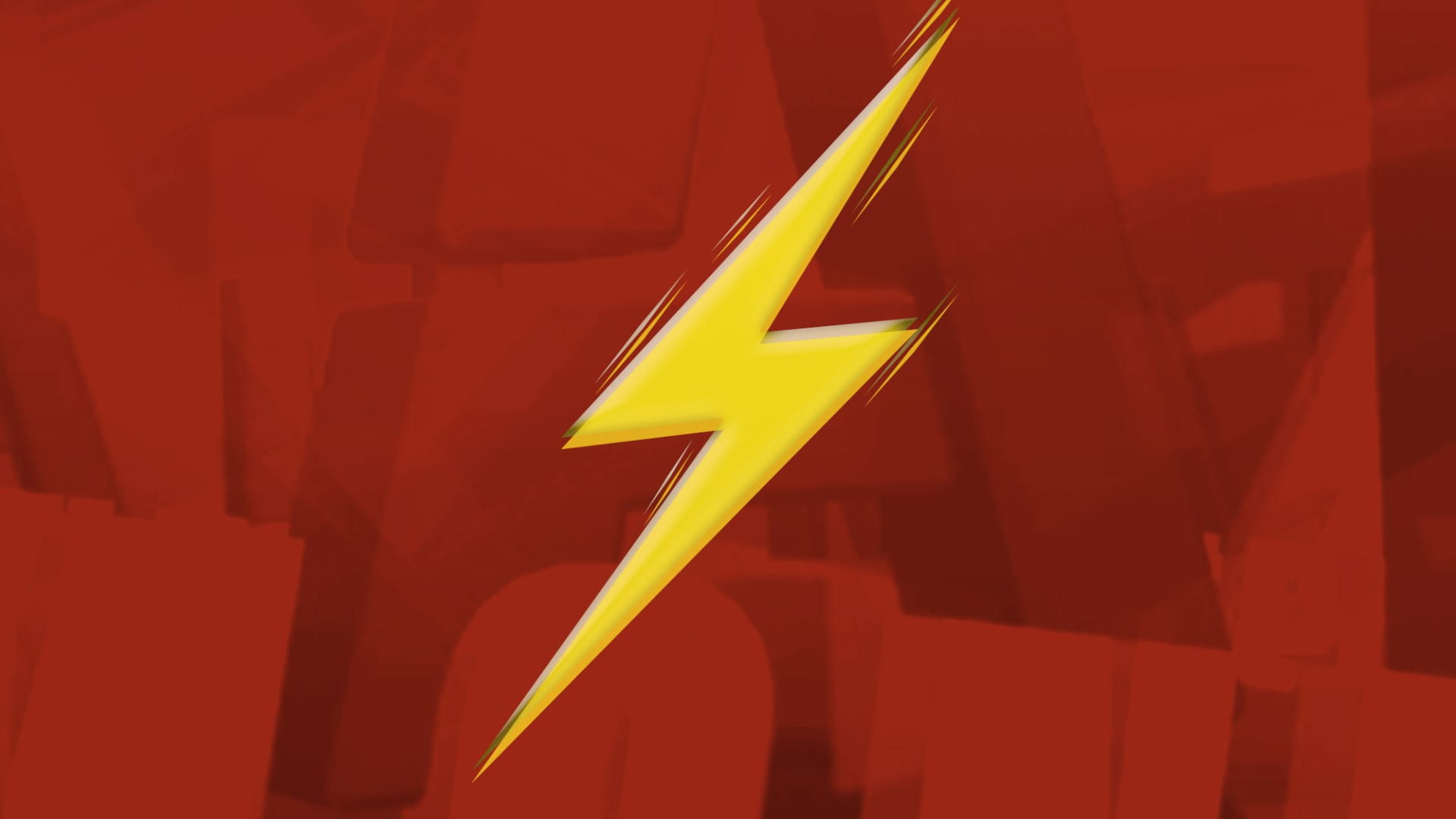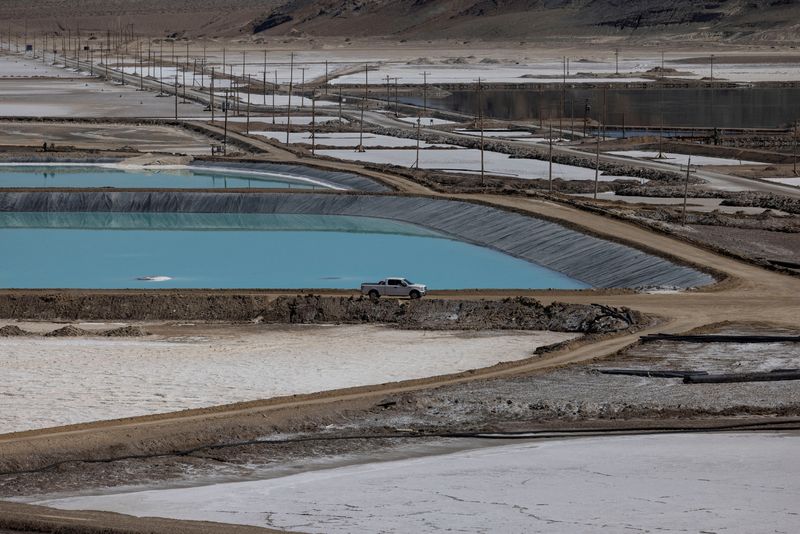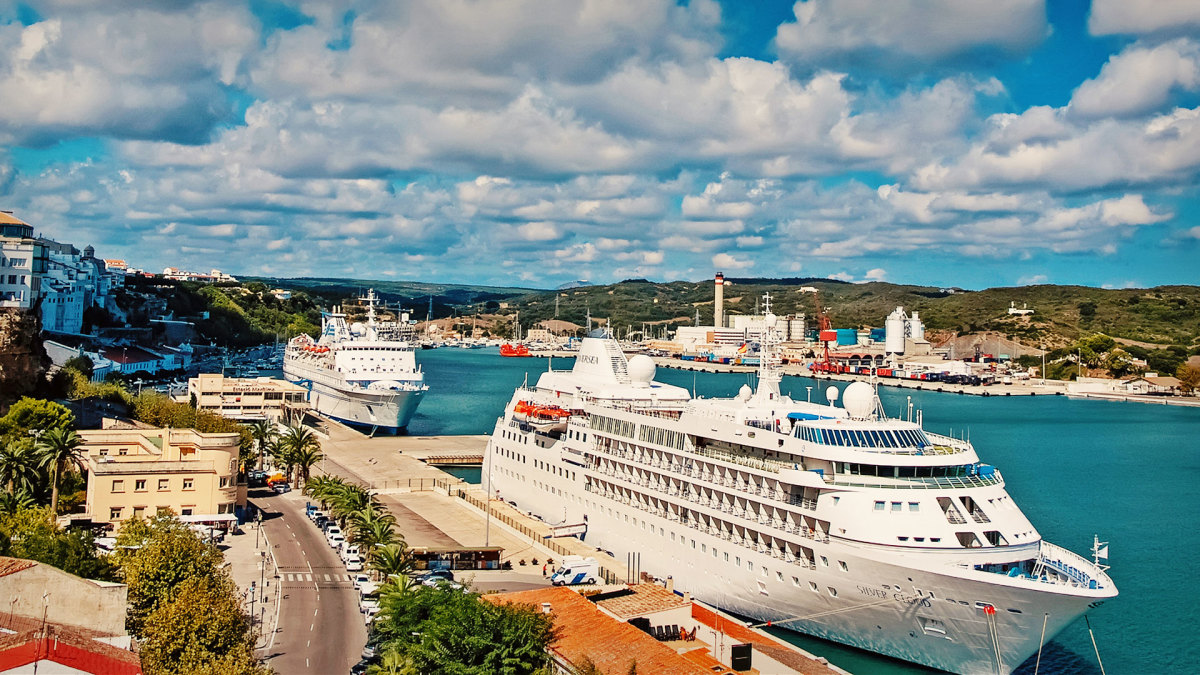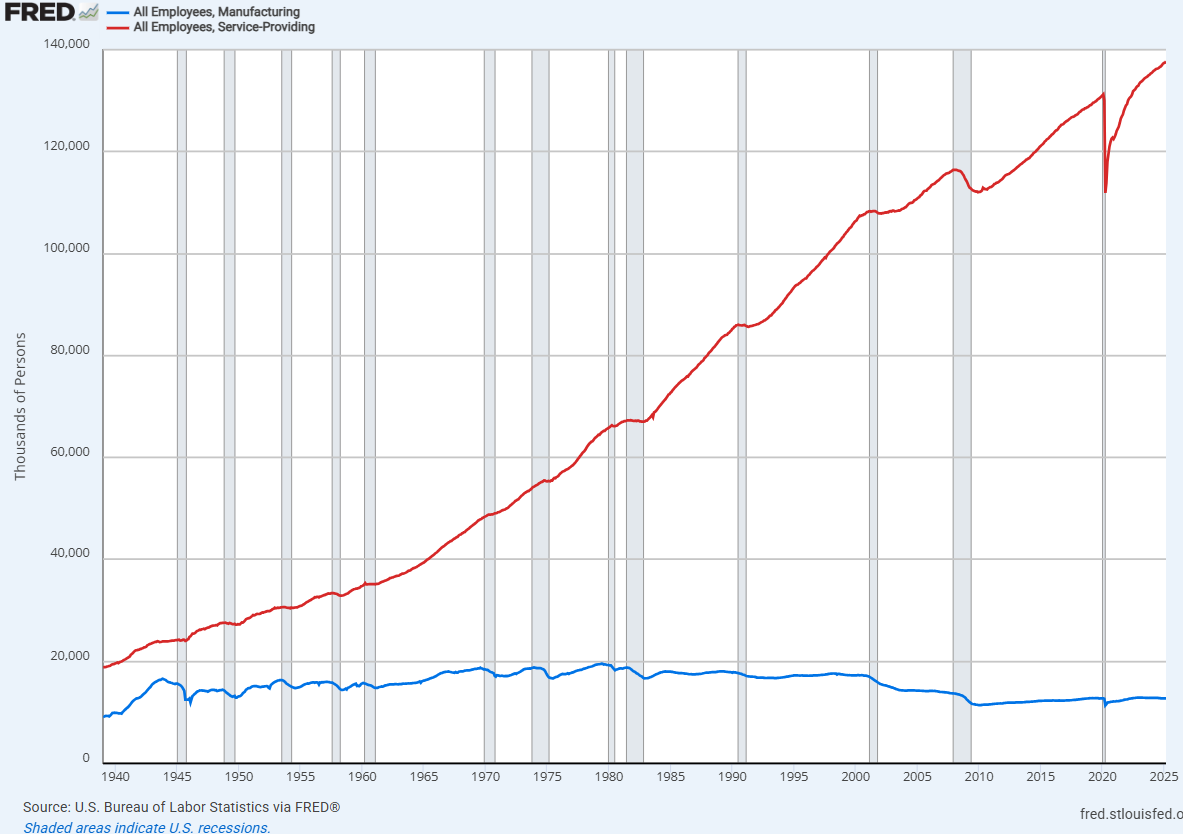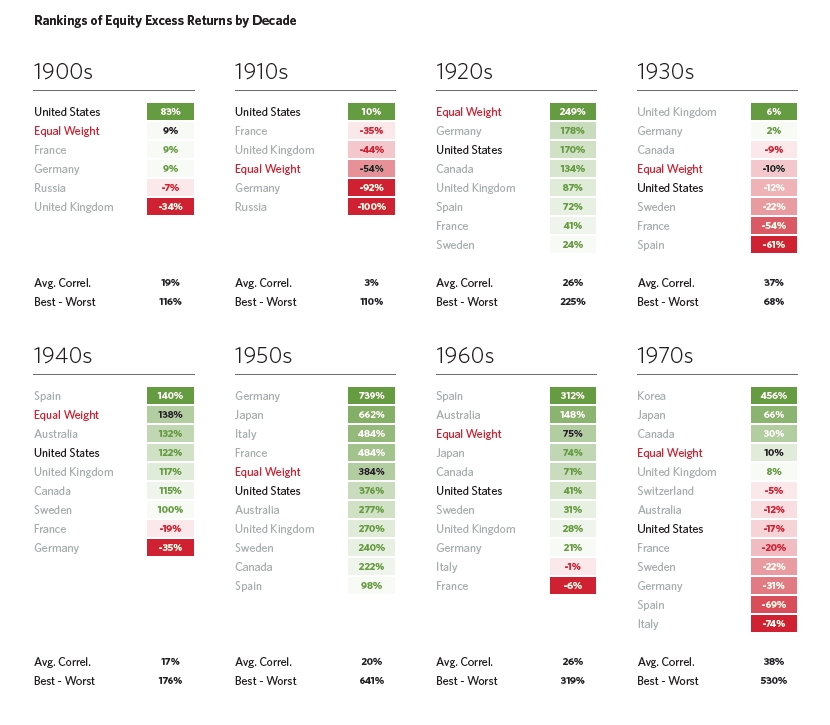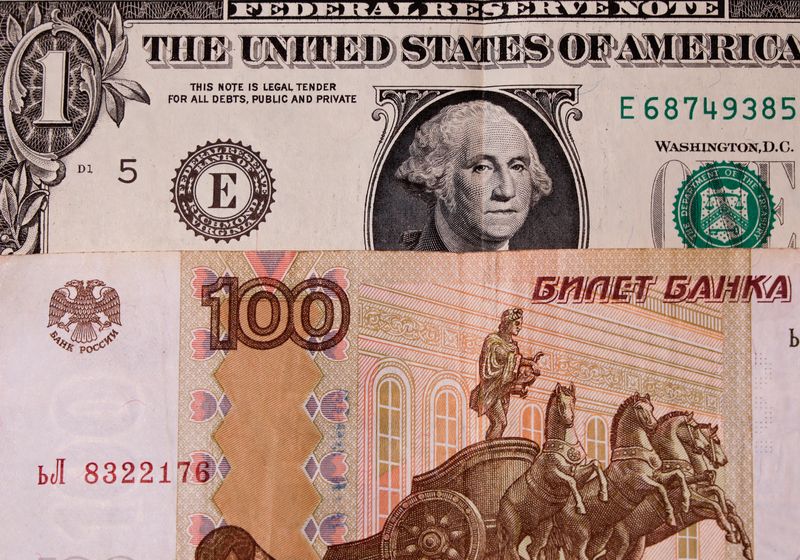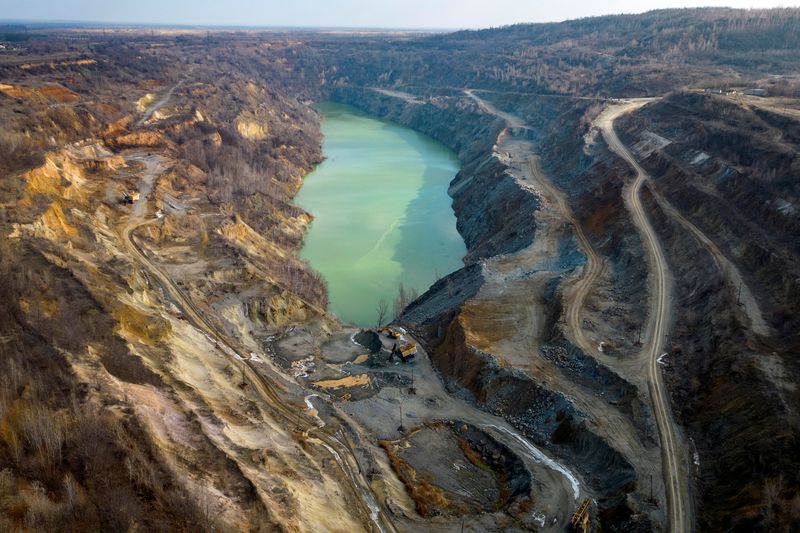The Navy Produced Nearly 10x More of This Ship Than the Next Most Common Ship
The attack on Pearl Harbor was devastating for America at the time, and was one of the factors which drew the United States — which had been acting as neutral — into World War II. Several ships were sunk. But the USS Nevada survived the initial attack. In later years, after the USS Nevada was […] The post The Navy Produced Nearly 10x More of This Ship Than the Next Most Common Ship appeared first on 24/7 Wall St..
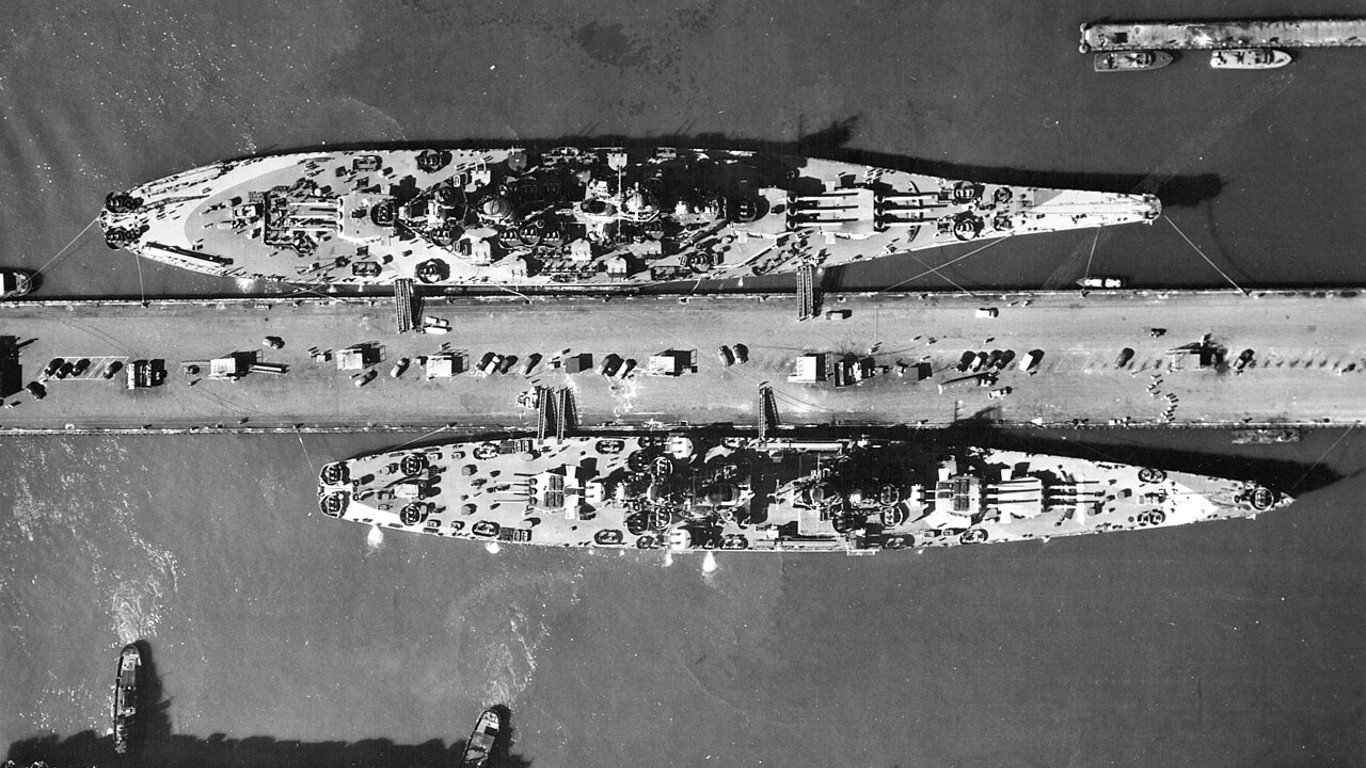
The attack on Pearl Harbor was devastating for America at the time, and was one of the factors which drew the United States — which had been acting as neutral — into World War II. Several ships were sunk. But the USS Nevada survived the initial attack. In later years, after the USS Nevada was decommissioned, the ship eventually sank in the Pacific. Researchers from the National Oceanic and Atmospheric Administration (NOAA) looking into the sunken ship recently made a new discovery, however: a boot left behind by a former soldier. Although the boot was not linked to any soldier deaths, and was most likely just left behind along with other varied objects, it does give us a glimpse into what members of the U.S. Navy carried with them during their time in battle. Equally important to finding objects is identifying the deceased servicemembers who were lost during World War II. Recently, the remains of U.S. Navy Mess Attendant 3rd Class Neil D. Frye, 20, which were identified in September 2024, were finally returned to his home state of North Carolina, where he was buried in April 2025. The cost of World War II is immense, but learning more about the battles, people, and ships involved can provide insights into the war. (These are the states with the most living World War II veterans.)
From the USS Nevada to the USS West Virginia, the ship that Frye was on when he passed, to many other ships and vessels, the U.S. Navy significantly grew its naval power during the course of the war. 24/7 Wall St. wanted to see which ships were most produced during World War II. To identify the most mass-produced American military ships and ship classes during World War II, 24/7 Wall St. sourced data from Military Factory. We focused on ship classes during World War II that had a minimum production of at least nine units, and excluded any ships that did not fit that criteria. All additional supplemental information comes from Military Factory, but was also verified using naval websites and historical repositories. Ships are listed in ascending order. We also included insights into what role the Navy played in World War II.
This previously published article was updated in April 2025 to highlight the return of Neil D. Frye’s remains and honor his legacy, as well as to provide additional information on naval activities during WW2.
What Role Did the U.S. Navy Play in World War II?

The naval history of World War II is truly fascinating. At the start of World War II, the U.S. Navy was relatively small in size. After the December 1941 attack on Pearl Harbor by Japanese forces, the main American naval battle fleet was all but knocked out — except for aircraft carriers, which became a mainstay of U.S. naval strategy. The U.S. Navy continued to expand and acquire new ships throughout World War II. This allowed the Navy to strongly project power and support Allied forces in the Pacific.
How Did Naval Power Grow?
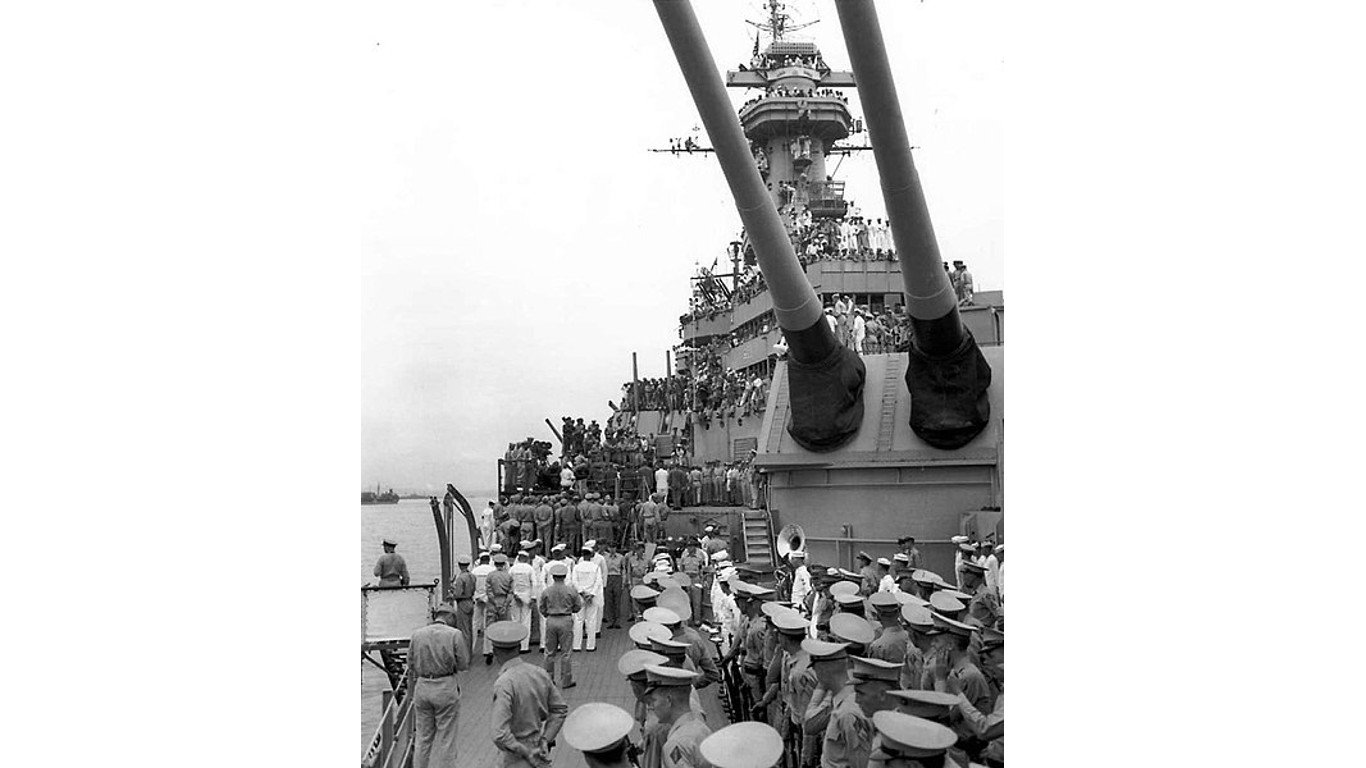
In June 1940, several months after the start of World War II, the U.S. Navy had a total of 478 ships. By August 1945, the U.S. Navy had 6,768 ships and naval vessels — including 377 destroyers, 232 submarines, and 1,204 patrol vessels.
Are World War II Naval Veterans Still Alive?

Yes, there are several World War II veterans today who served in the U.S. Navy and made a significant impact on war efforts. However, less than 1% of all WW2 veterans are still alive. (Here’s what we’ll lose when they’re gone.)
Why Does This Matter Now?
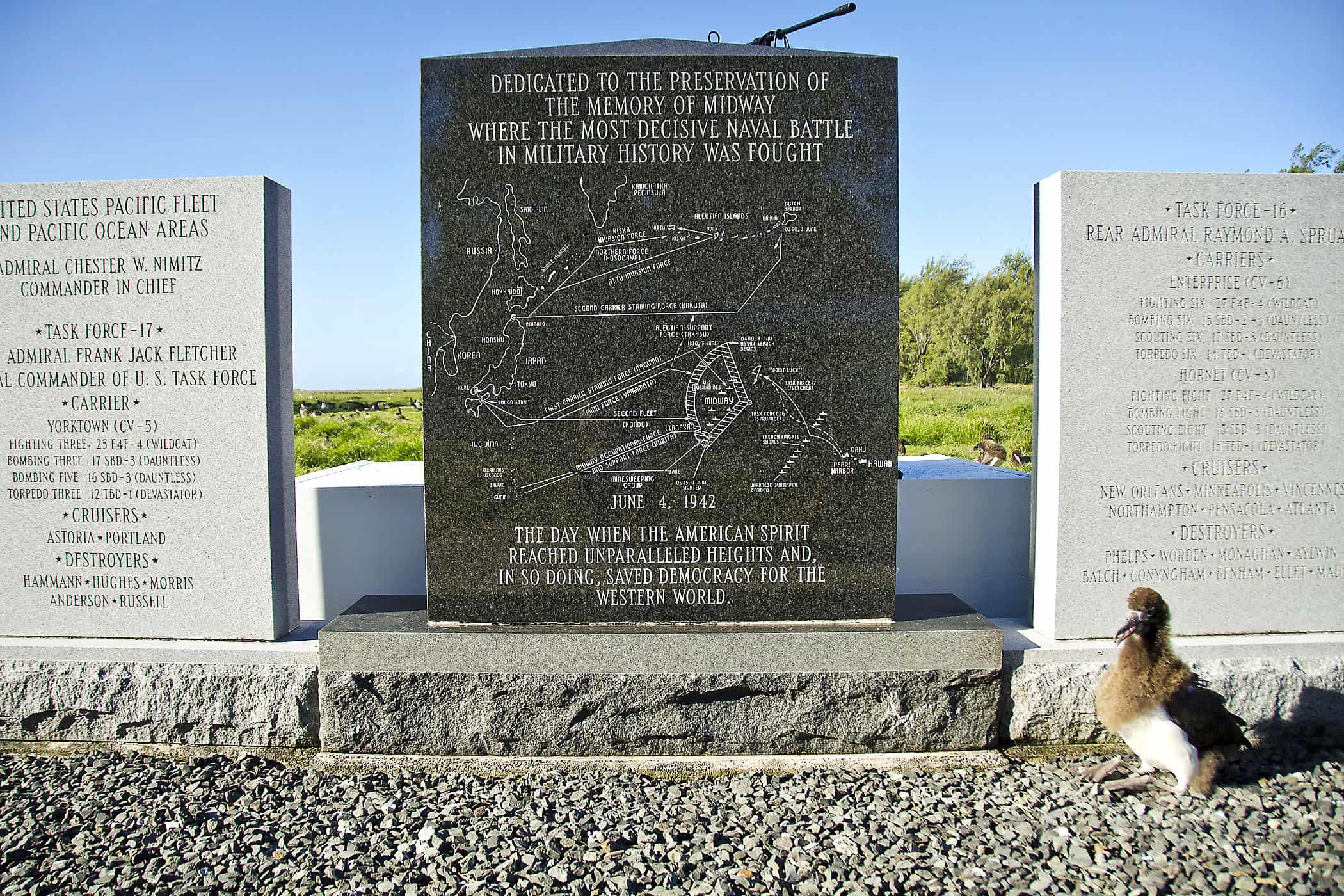
World War II was a unique time for the American economy in terms of the war effort (bonds, material drives, rationing) and the mass production of weapons and vehicles by some of its biggest manufacturers, many of which are still around today. The biggest American shipbuilders were Newport News Shipbuilding & Drydock, New York Shipbuilding Corporation, and the Bethlehem Shipbuilding Corporation. Newport News Shipbuilding & Drydock is currently owned by Huntington Ingalls Industries, one of the top current shipbuilders of the United States Navy. This shows the lasting power of these ships over time.
Here are the most mass-produced US Navy ships in World War II:
29. Independence-class
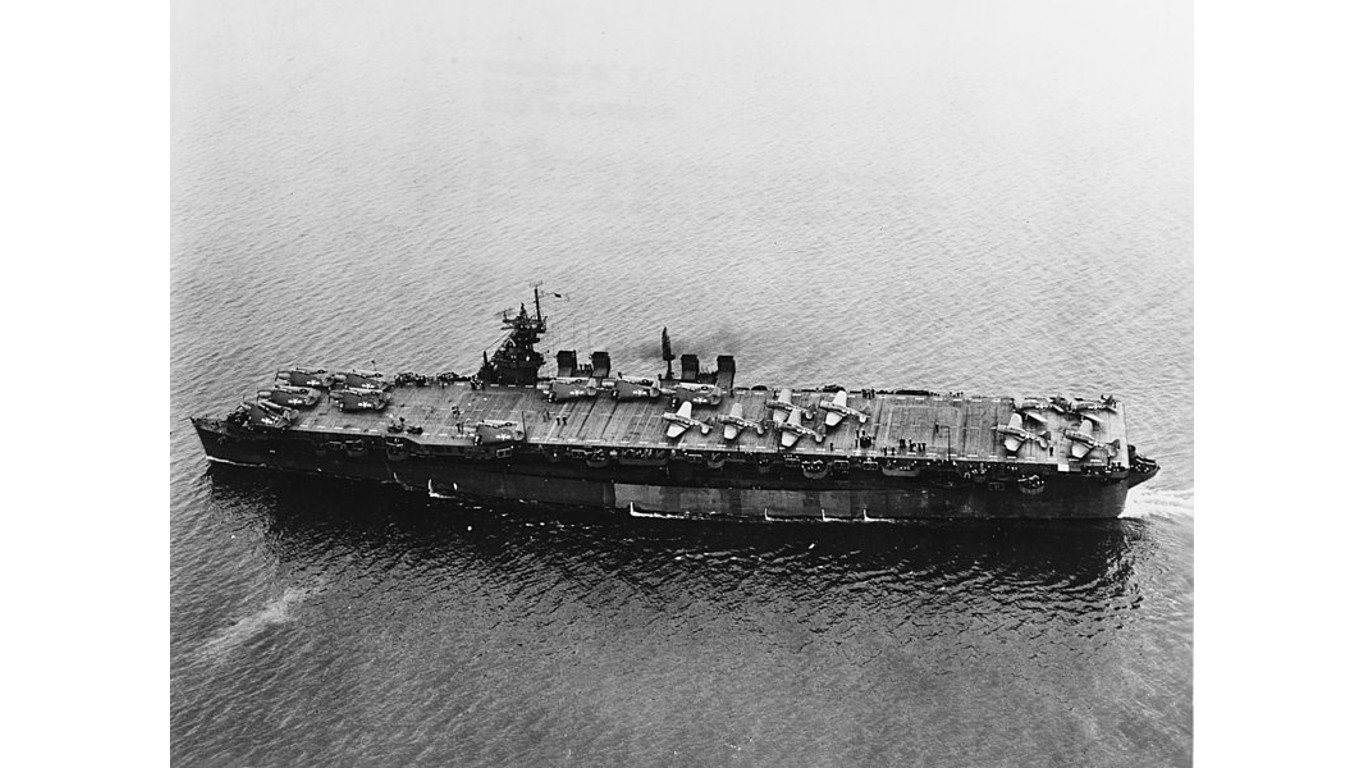
- Number produced: 9
- Type: Conventionally-powered light aircraft carrier
- Notable ship(s): USS Independence (CVL-22), USS Cabot (CVL-28), USS Cowpens (CVL-25)
- Year USS Independence (CVL-22) entered service: 1943
- USS Independence (CVL-22) personnel: 1,569
28. Sims-class
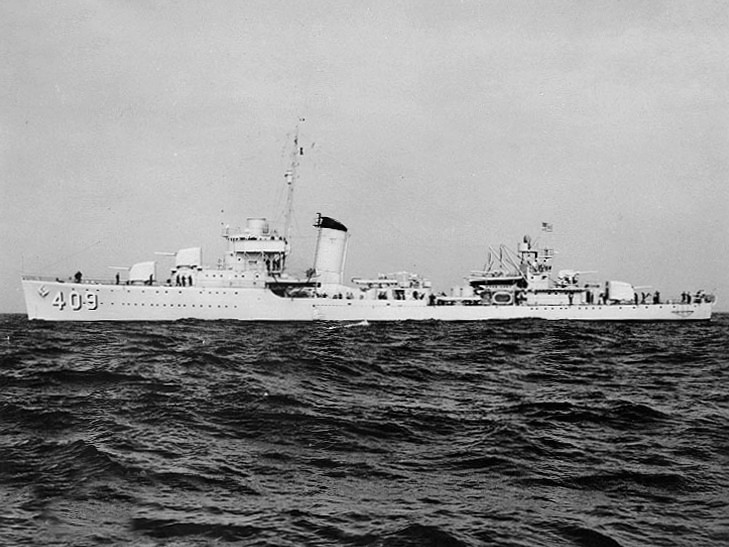
- Number produced: 12
- Type: Destroyer
- Notable ship(s): USS Wainwright (DD-419)
- Year USS Wainwright (DD-419) entered service: 1940
- USS Wainwright (DD-419) personnel: 192
27. Fargo-class
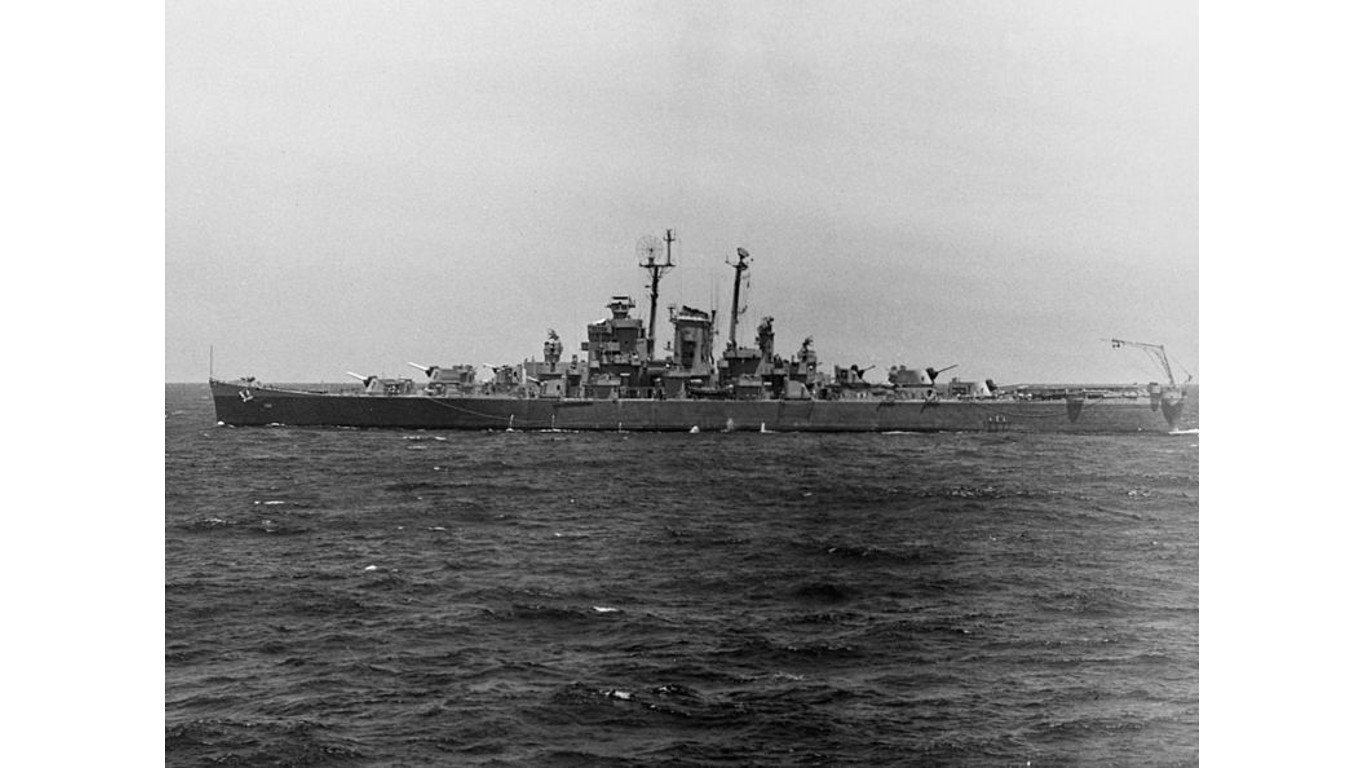
- Number produced: 13
- Type: Light cruiser
- Notable ship(s): USS Fargo (CL-106)
- Year USS Fargo (CL-106) entered service: 1945
- USS Fargo (CL-106) personnel: 1,255
26. Baltimore-class
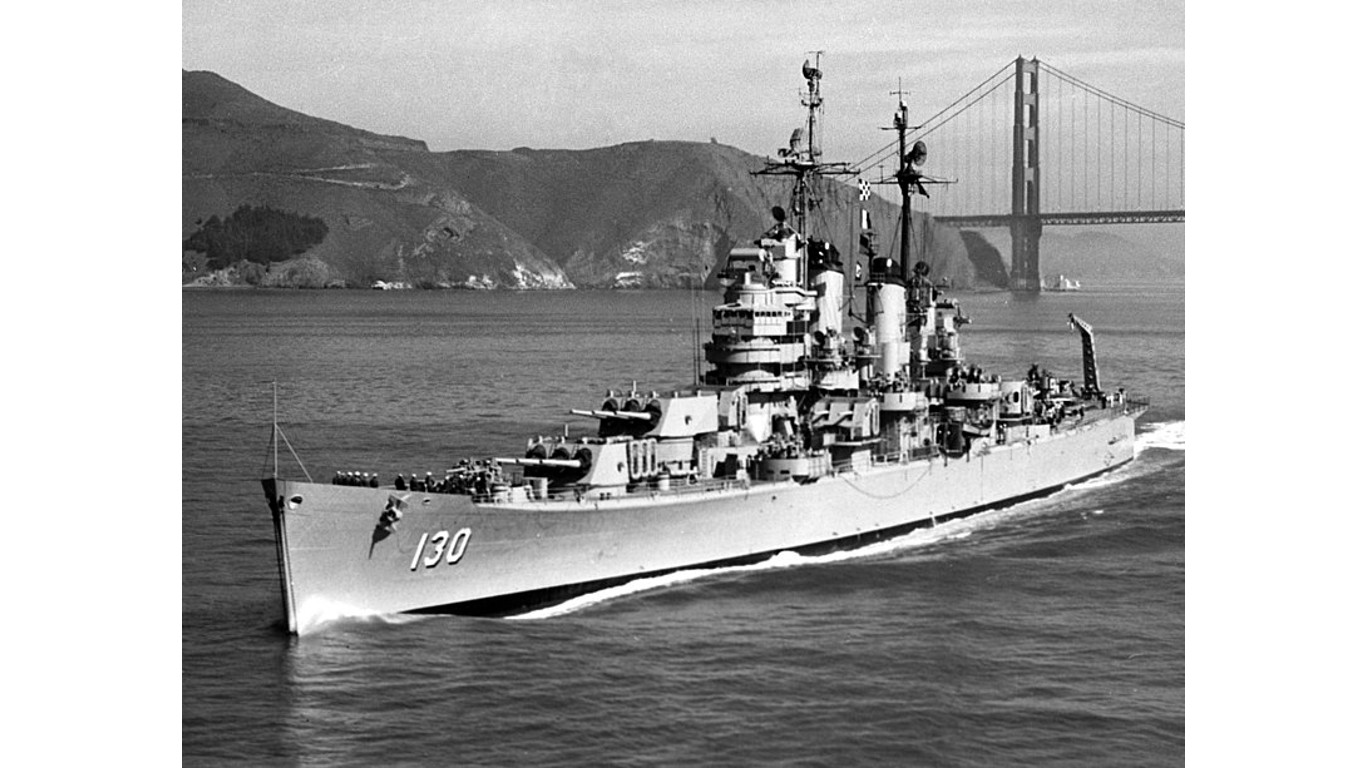
- Number produced: 14
- Type: Heavy cruiser
- Notable ship(s): USS Fall River (CA-131), USS Saint Paul (CA-73)
- Year USS Fall River (CA-131) entered service: 1945
- USS Fall River (CA-131) personnel: 1,142
25. Mahan-class
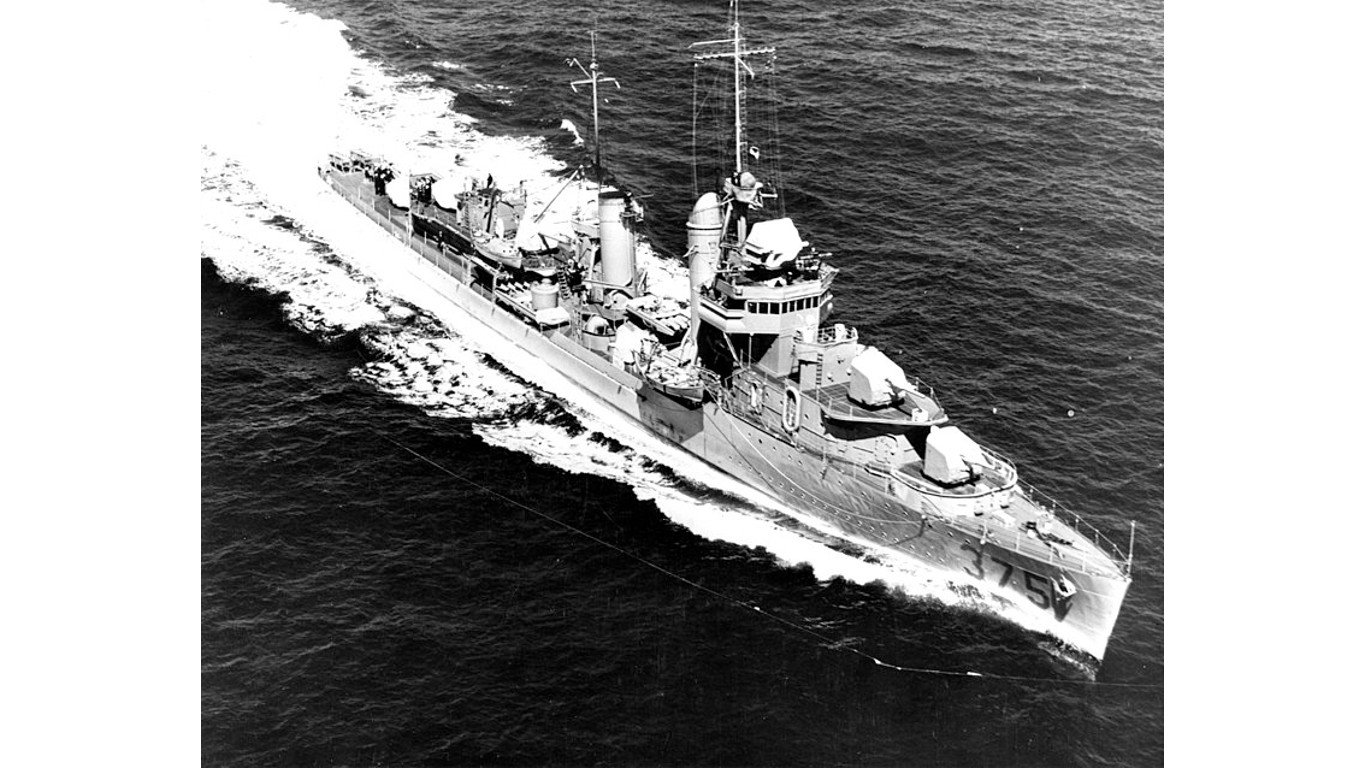
- Number produced: 18
- Type: Multicole destroyer
- Notable ship(s): USS Downes (DD-375)
- Year USS Downes (DD-375) entered service: 1937
- USS Downes (DD-375) personnel: 158
24. PT 95
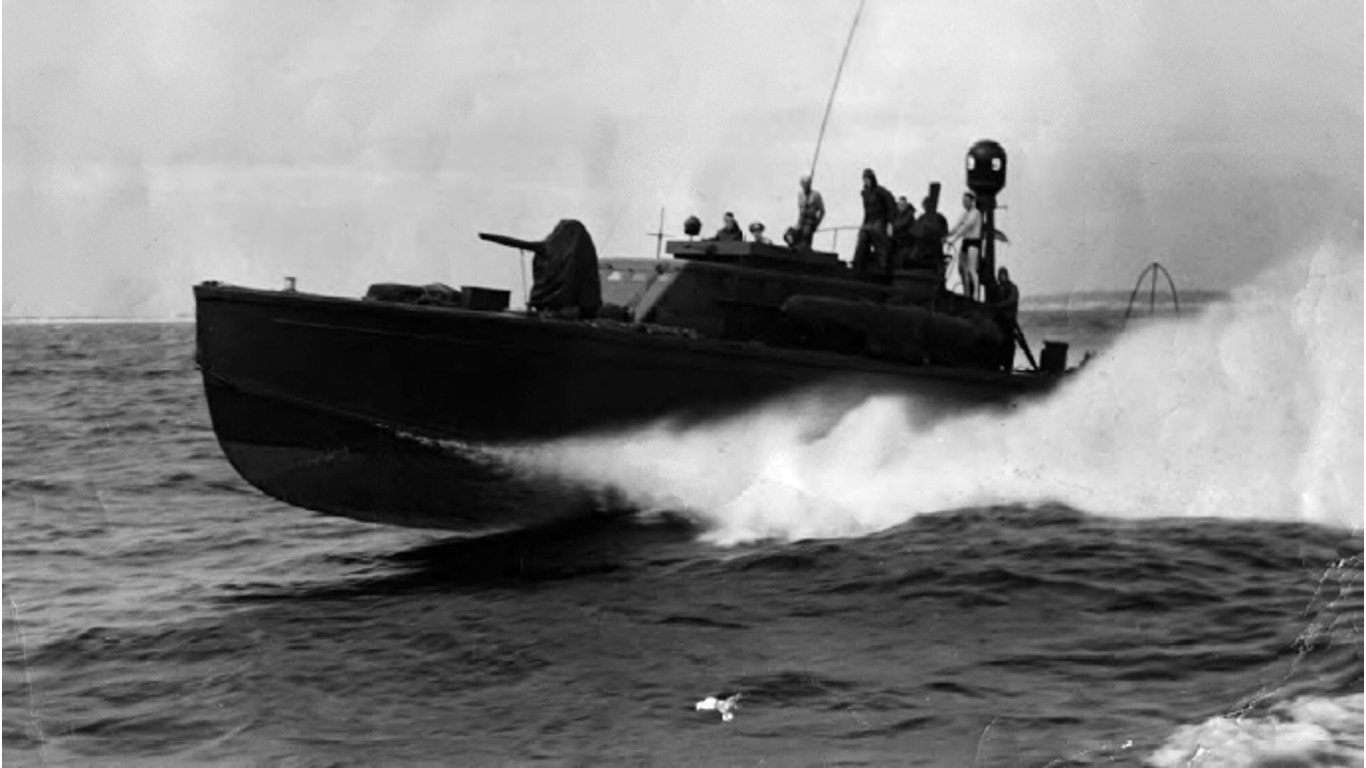
- Number produced: 18
- Type: Motorized torpedo fast boat
- Notable ship(s): Huckins PT Boat (Patrol Torpedo)
- Year Huckins PT Boat (Patrol Torpedo) entered service: 1942
- Huckins PT Boat (Patrol Torpedo) personnel: 11
23. Rudderow-class
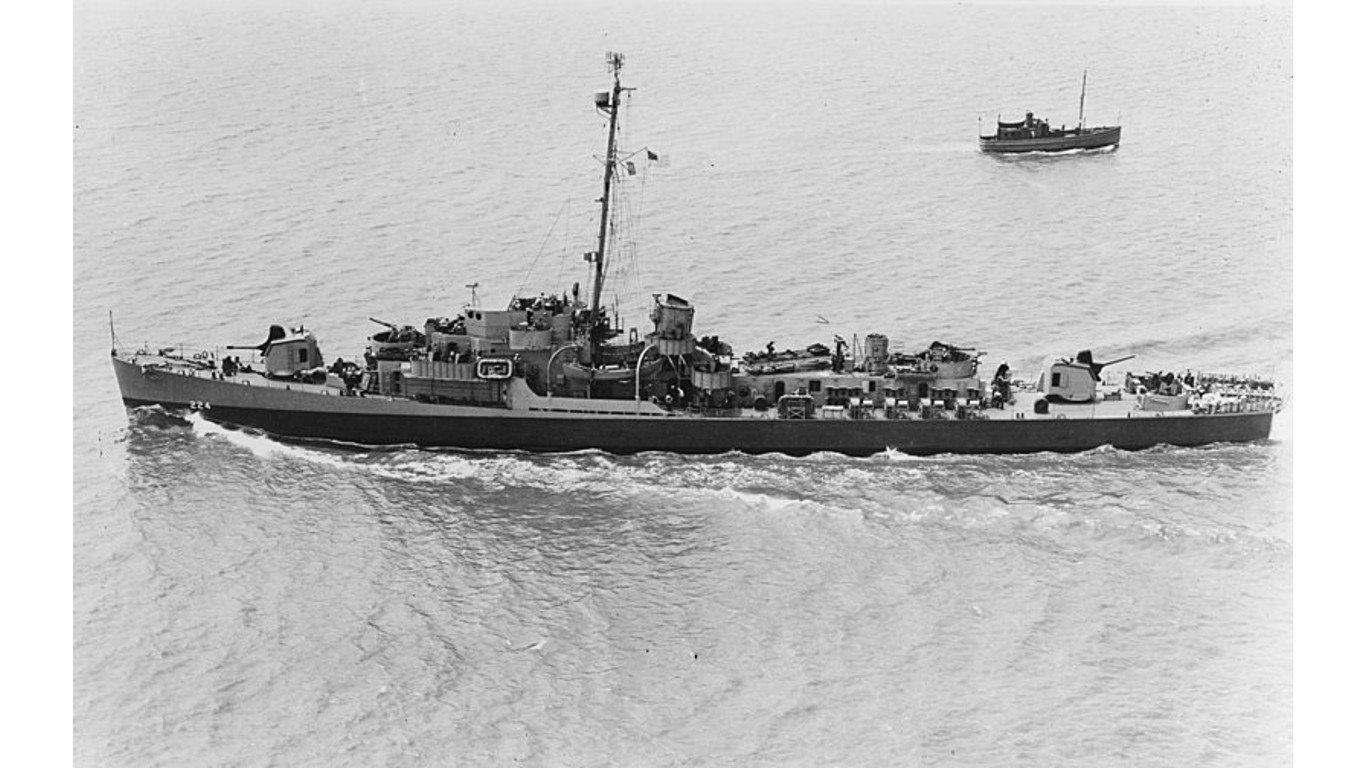
- Number produced: 22
- Type: Destroyer escort
- Notable ship(s): USS Rudderow (DE-224)
- Year USS Rudderow (DE-224) entered service: 1944
- USS Rudderow (DE-224) personnel: 221
22. Essex-class
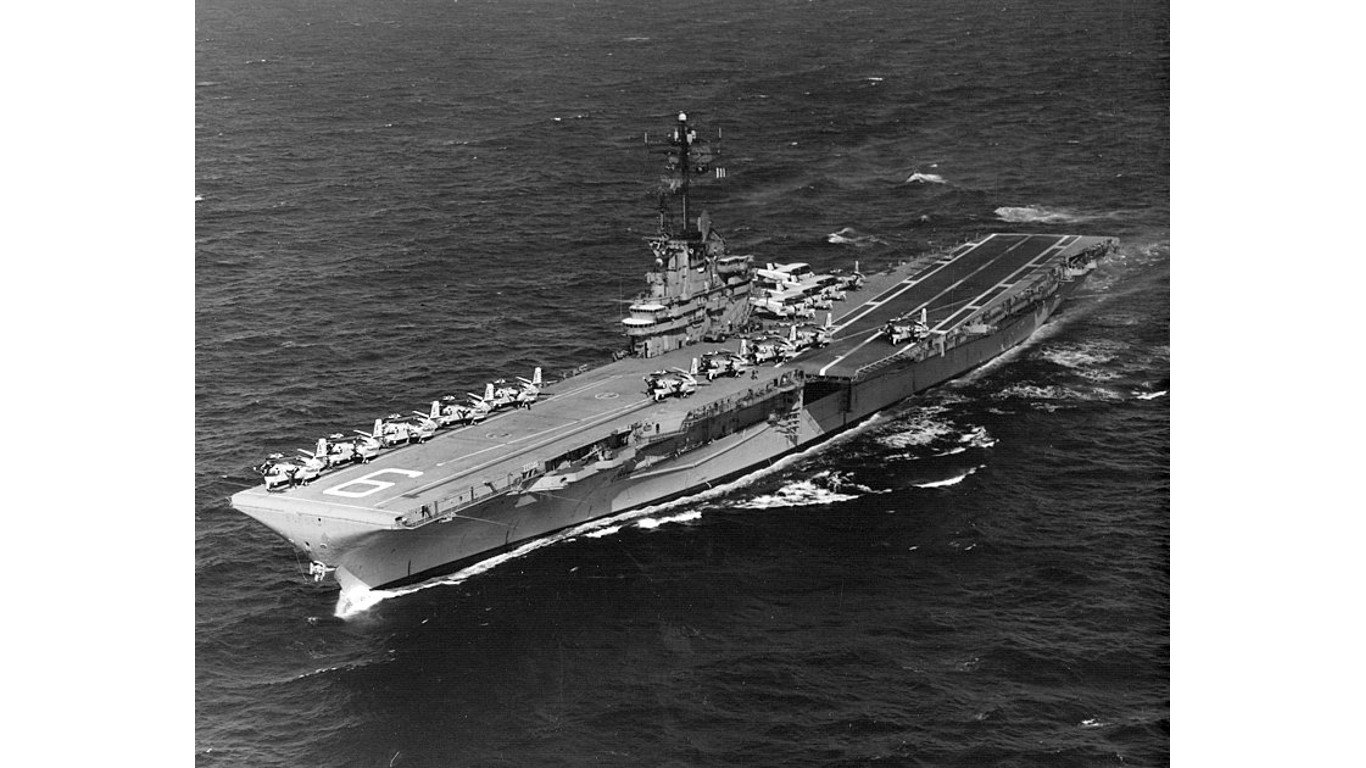
- Number produced: 24
- Type: Conventionally-powered aircraft carrier
- Notable ship(s): USS Essex (CV-9), USS Hancock (CV-19), USS Franklin (CV-13)
- Year USS Essex (CV-9) entered service: 1942
- USS Essex (CV-9) personnel: 2,600
21. Cleveland-class

- Number produced: 29
- Type: Light cruiser
- Notable ship(s): USS Cleveland (CL-55), USS Oklahoma City (CL-91), USS Wilkes-Barre (CL-103)
- Year USS Cleveland (CL-55) entered service: 1942
- USS Cleveland (CL-55) personnel: 1,255
20. Benson-class
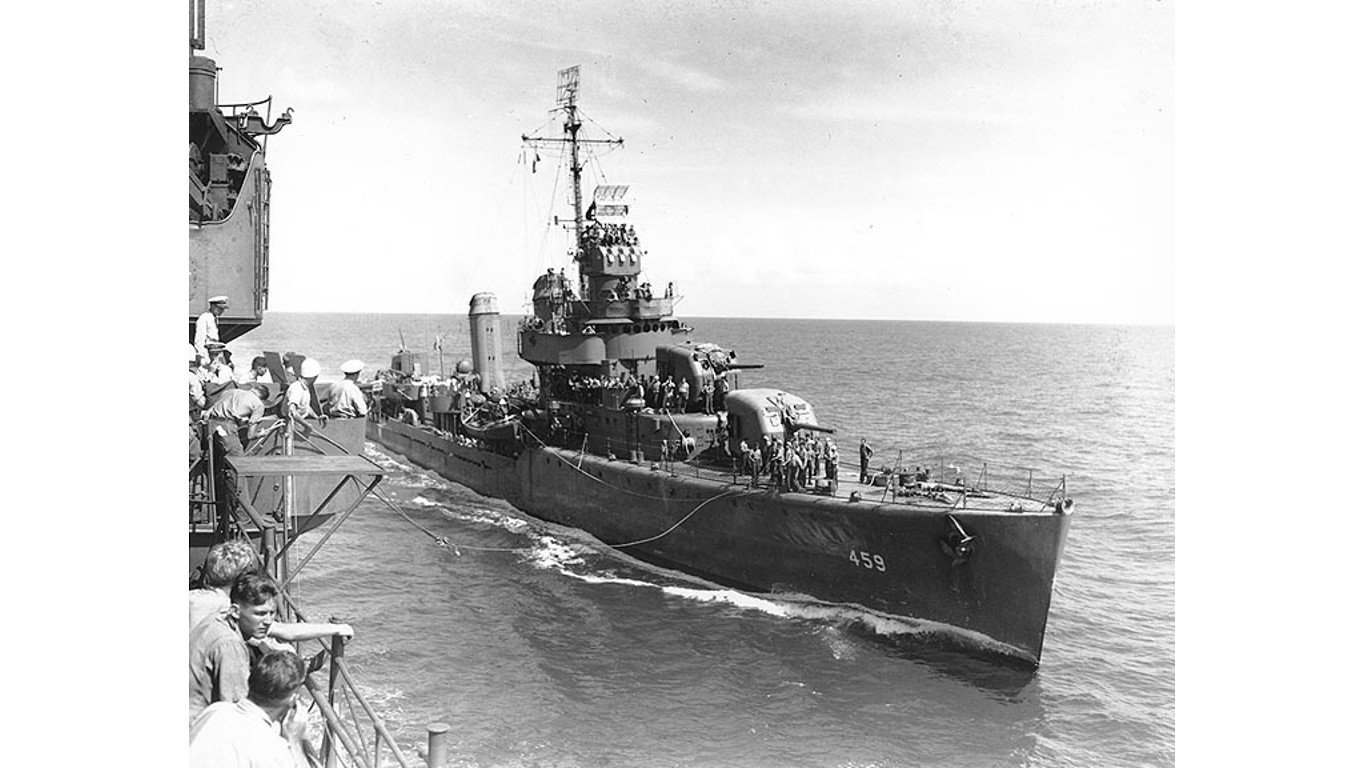
- Number produced: 30
- Type: Destroyer
- Notable ship(s): USS Laffey (DD-459)
- Year USS Laffey (DD-459) entered service: 1942
- USS Laffey (DD-459) personnel: 208
19. Tolland-class
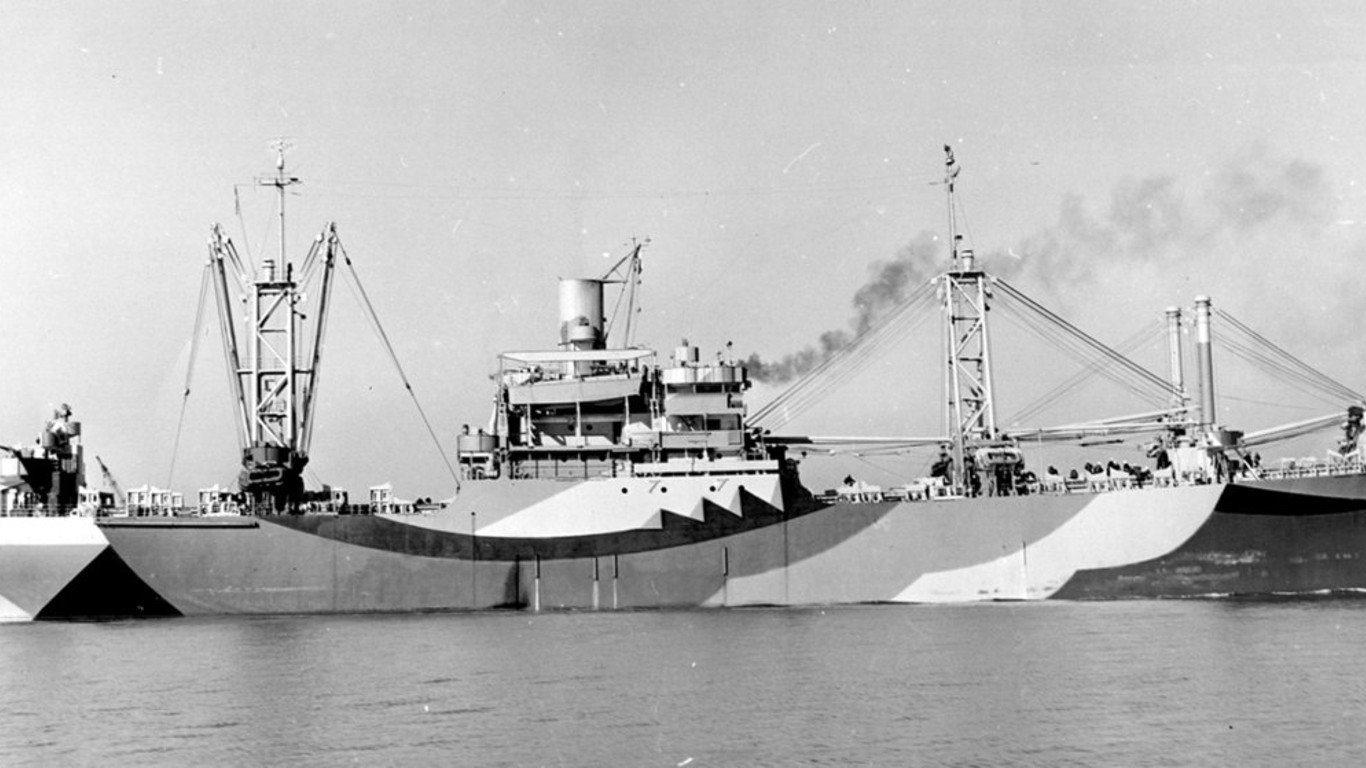
- Number produced: 33
- Type: Attack cargo ship
- Notable ship(s): USS Alamance (AKA-75)
- Year USS Alamance (AKA-75) entered service: 1944
- USS Alamance (AKA-75) personnel: 395
18. Bogue-class
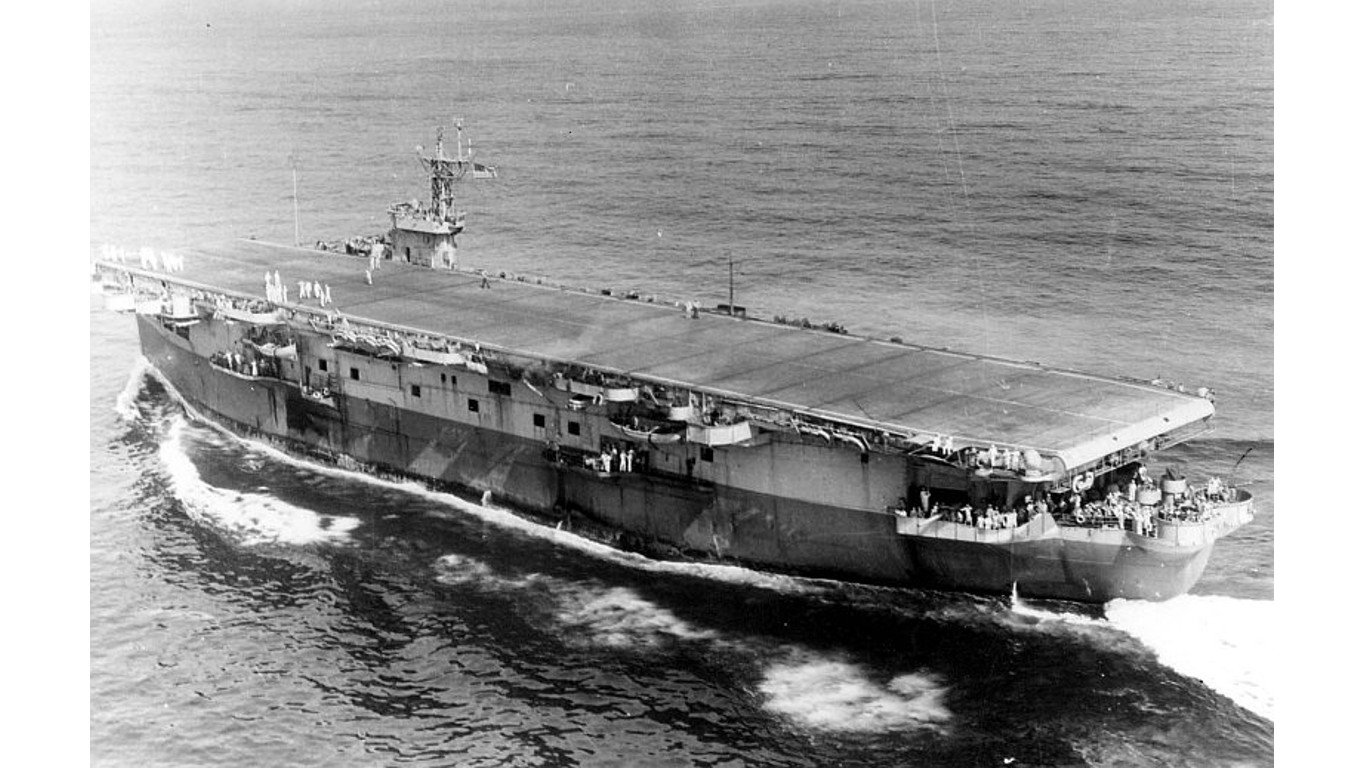
- Number produced: 45
- Type: Escort carrier/aircraft carrier
- Notable ship(s): USS Bogue (CVE-9)
- Year USS Bogue (CVE-9) entered service: 1942
- USS Bogue (CVE-9) personnel: 890
17. Lapwing-class
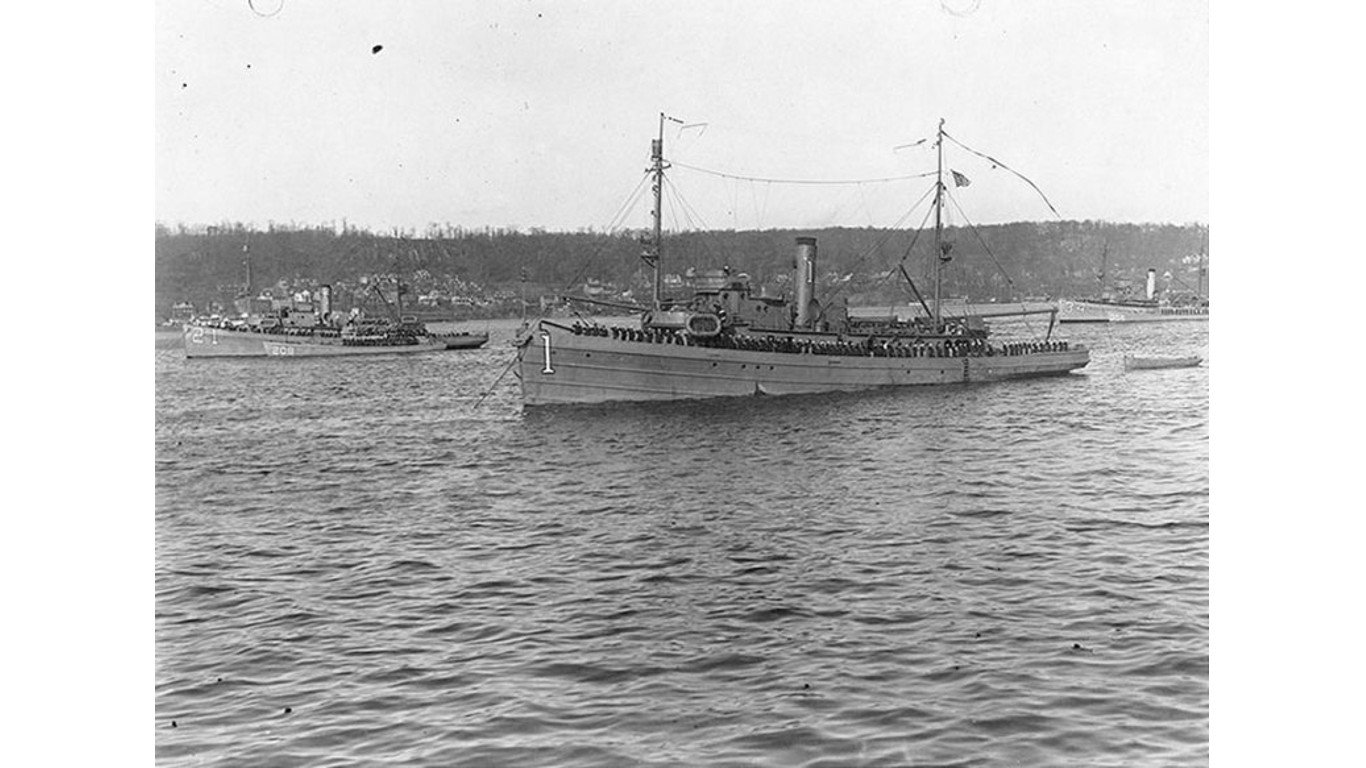
- Number produced: 49
- Type: Minesweeper
- Notable ship(s): USS Lapwing (AM-1)
- Year USS Lapwing (AM-1) entered service: 1918
- USS Lapwing (AM-1) personnel: 78
16. Casablanca-class

- Number produced: 50
- Type: Escort carrier
- Notable ship(s): USS Kalinin Bay (CVE-68), USS Liscome Bay (CVE-56), USS Shamrock Bay (CVE-84)
- Year USS Kalinin Bay (CVE-68) entered service: 1943
- USS Kalinin Bay (CVE-68) personnel: 860
15. Allen M. Sumner-class
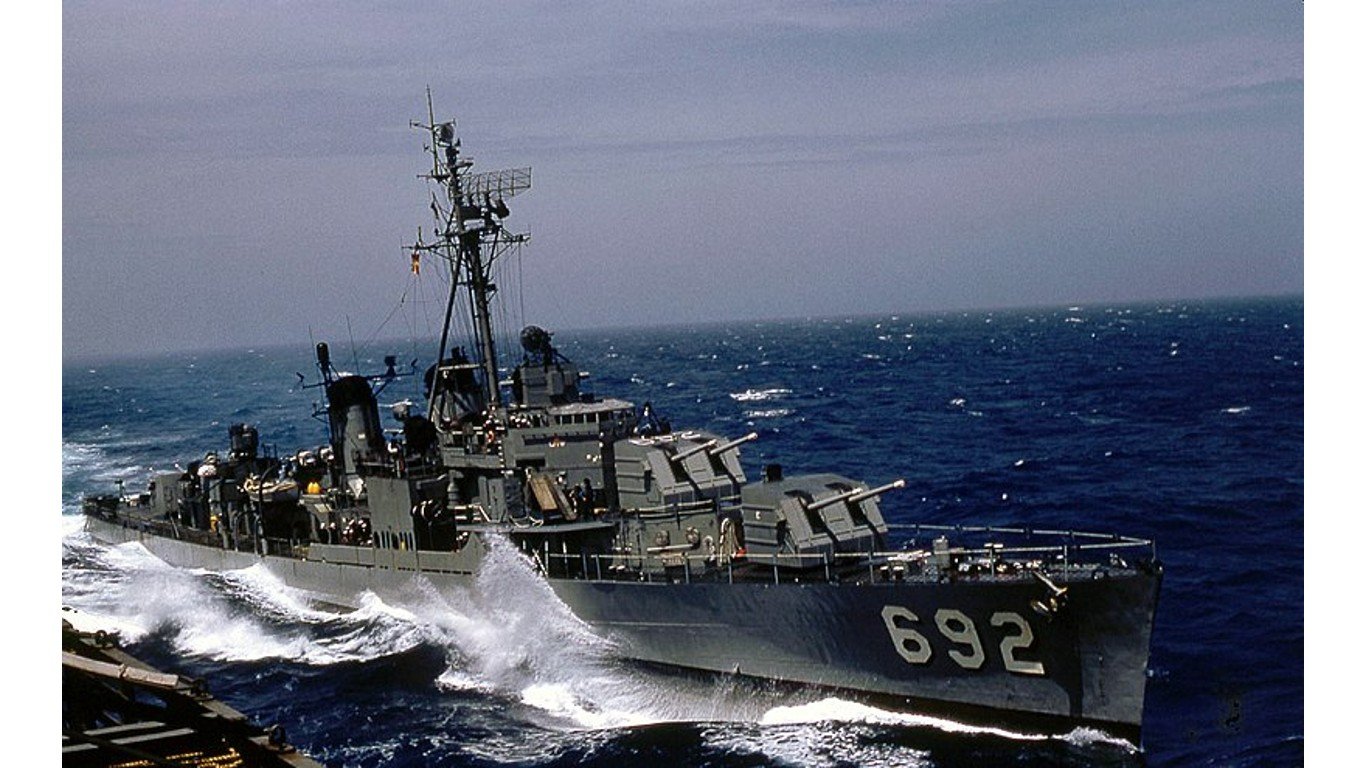
- Number produced: 58
- Type: Destroyer
- Notable ship(s): USS Allen M. Sumner (DD-692), USS Laffey (DD-724), USS Hugh W. Hadley (DD-774)
- Year USS Allen M. Sumner (DD-692) entered service: 1944
- USS Allen M. Sumner (DD-692) personnel: 336
14. Crater-class freighter
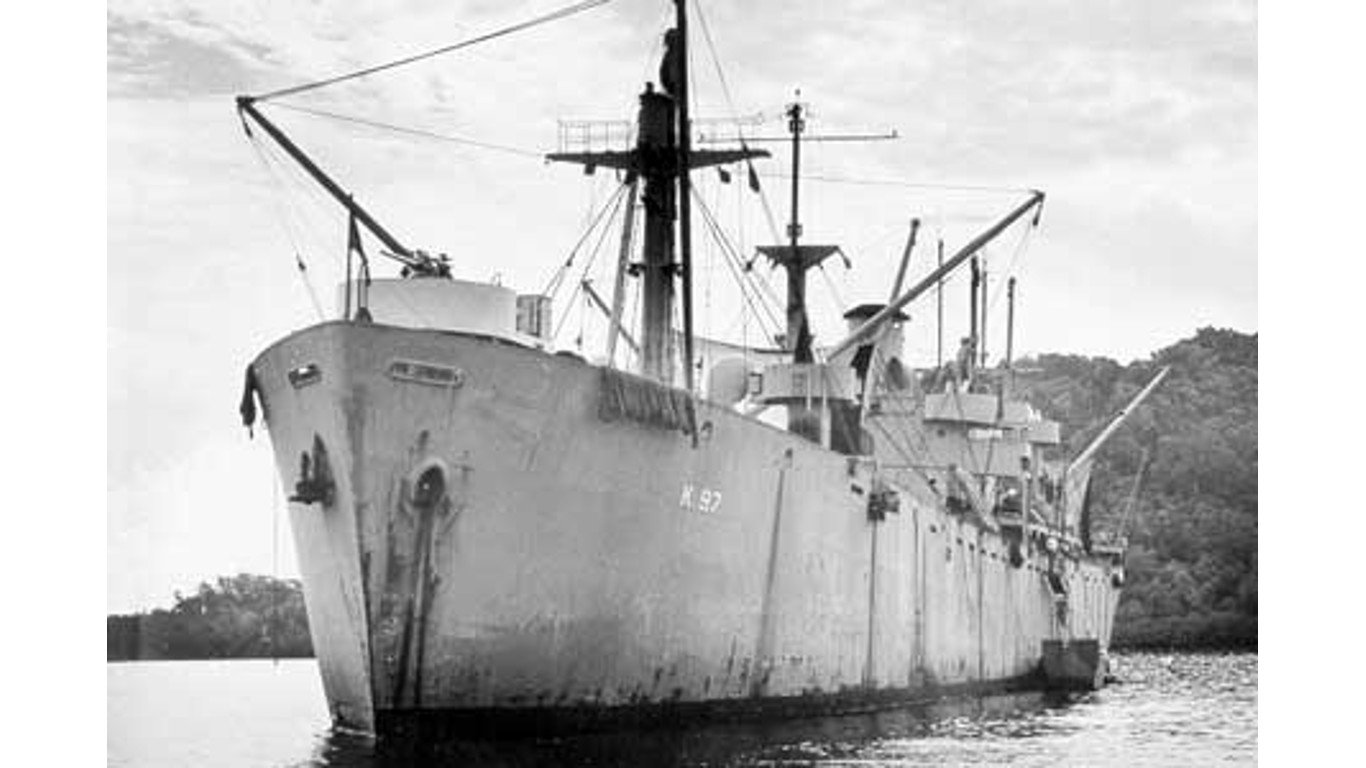
- Number produced: 62
- Type: Cargo ship
- Notable ship(s): USS Serpens (AK-97)
- Year USS Serpens (AK-97) entered service: 1943
- USS Serpens (AK-97) personnel: 206
13. Gleaves-class
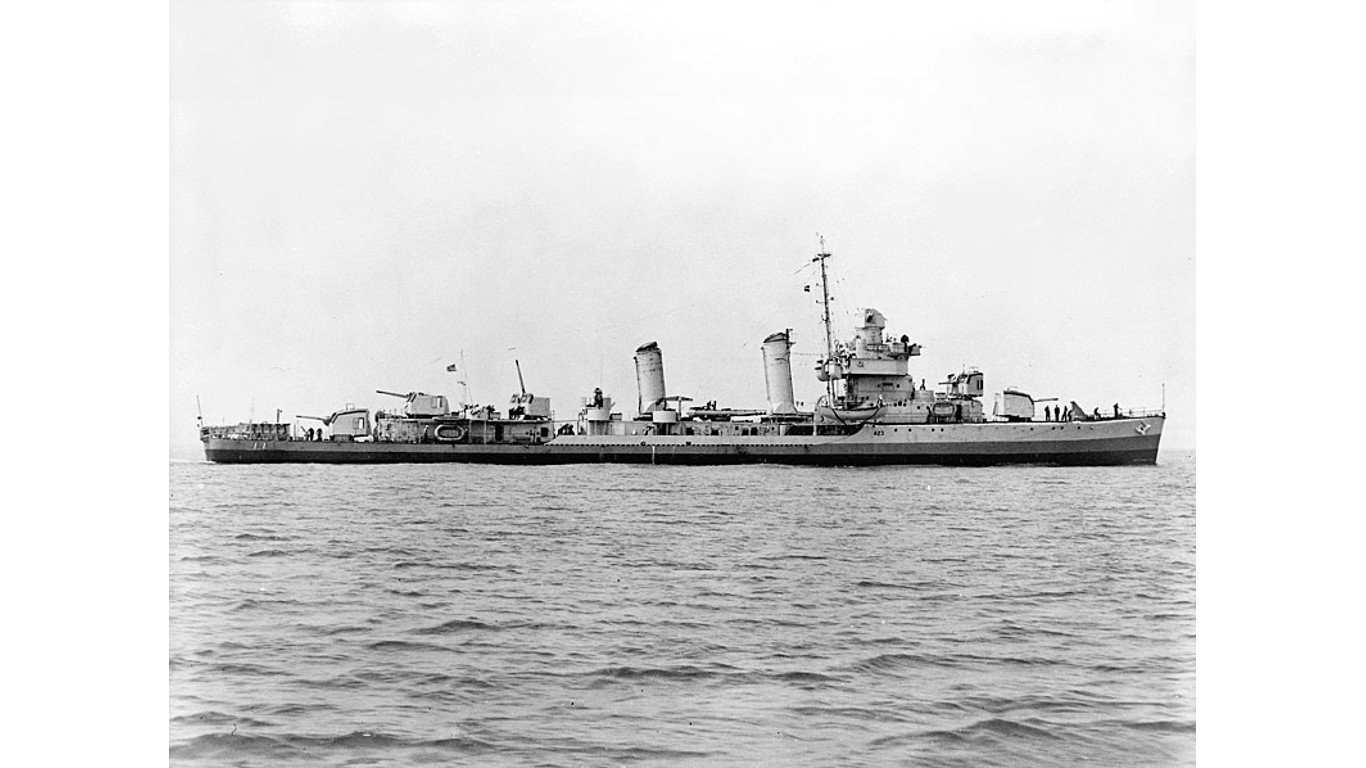
- Number produced: 66
- Type: Destroyer
- Notable ship(s): USS Gleaves (DD-423), USS McCalla (DD-488)
- Year USS Gleaves (DD-423) entered service: 1940
- USS Gleaves (DD-423) personnel: 276
12. John C. Butler-class
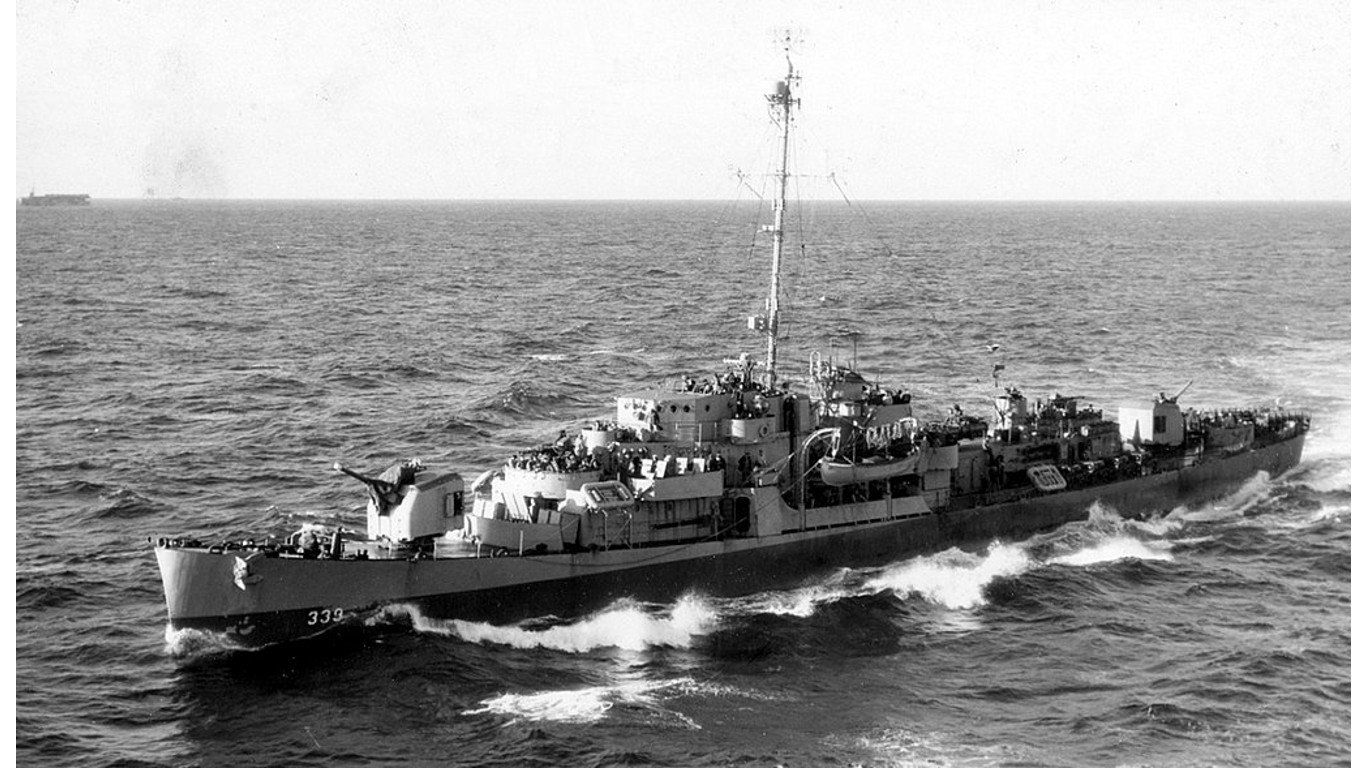
- Number produced: 83
- Type: Destroyer escort
- Notable ship(s): USS John C. Butler (DE-339), USS Samuel B. Roberts (DE-413)
- Year USS John C. Butler (DE-339) entered service: 1944
- USS John C. Butler (DE-339) personnel: 186
11. Edsall-class
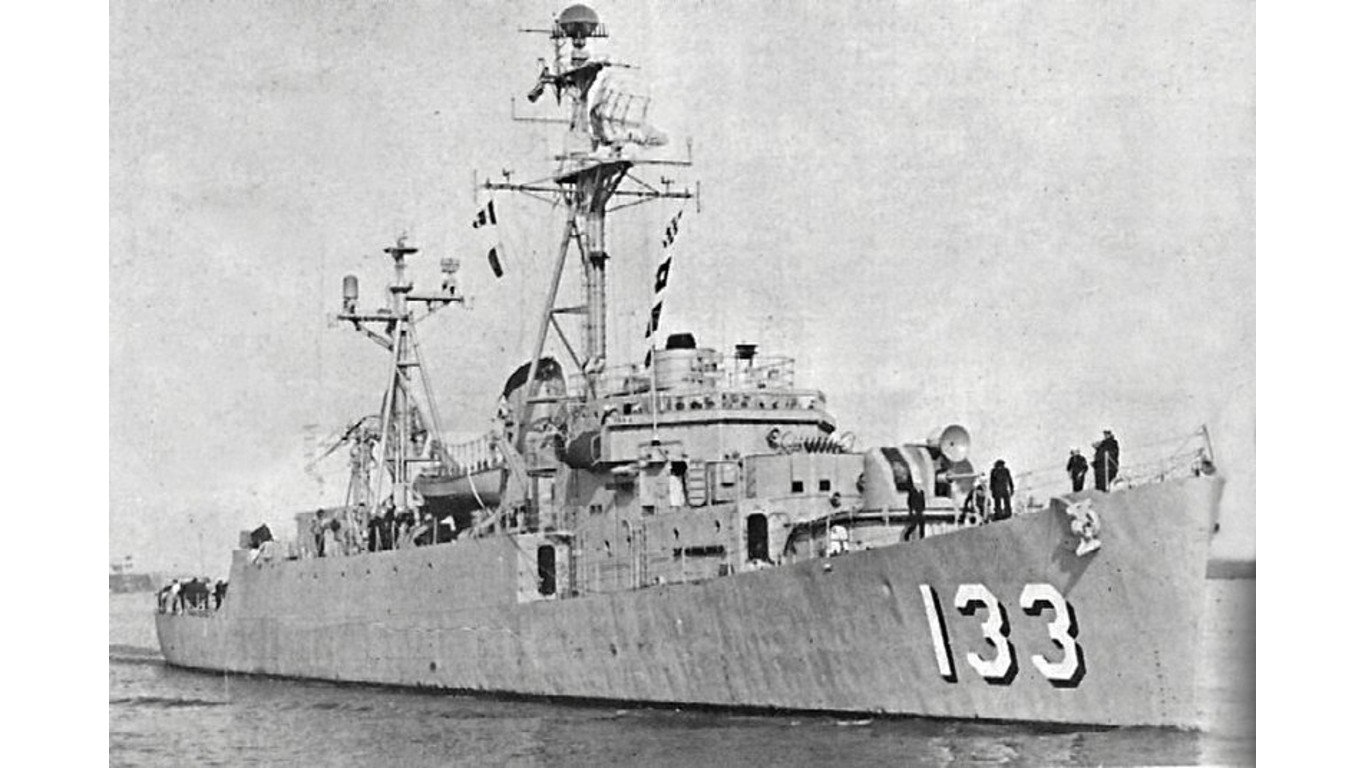
- Number produced: 85
- Type: Destroyer escort
- Notable ship(s): USS Pillsbury (DE-133)
- Year USS Pillsbury (DE-133) entered service: 1943
- USS Pillsbury (DE-133) personnel: 209
10. Gearing-class
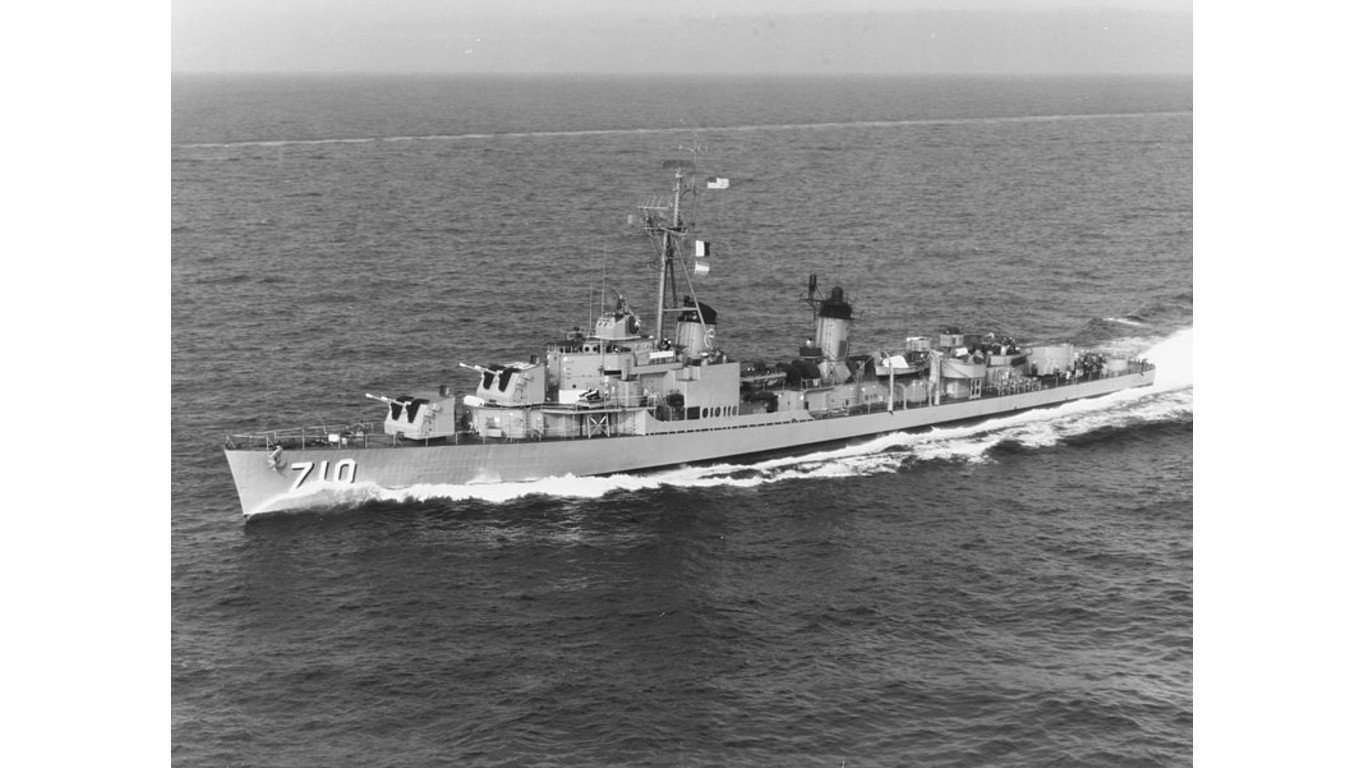
- Number produced: 98
- Type: Destroyer/submarine hunter
- Notable ship(s): USS Gearing (DD-710), USS Floyd B. Parks (DD-884)
- Year USS Gearing (DD-710) entered service: 1945
- USS Gearing (DD-710) personnel: 336
9. Admirable-class
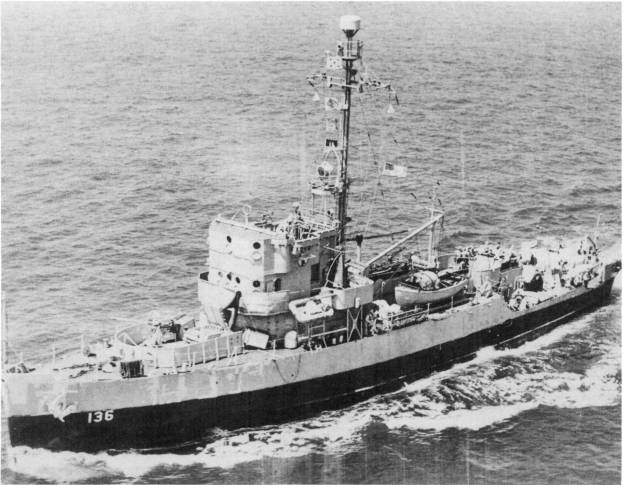
- Number produced: 123
- Type: Minesweeper / anti-submarine warfare vessel
- Notable ship(s): USS Improve (AM-247)
- Year USS Improve (AM-247) entered service: 1944
- USS Improve (AM-247) personnel: 104
8. Clemson-class

- Number produced: 156
- Type: Destroyer
- Notable ship(s): USS John D. Ford (DD-228), USS McCalla (DD-253), USS Reuben James (DD-245)
- Year USS John D. Ford (DD-228) entered service: 1920
- USS John D. Ford (DD-228) personnel: 122
7. Fletcher-class
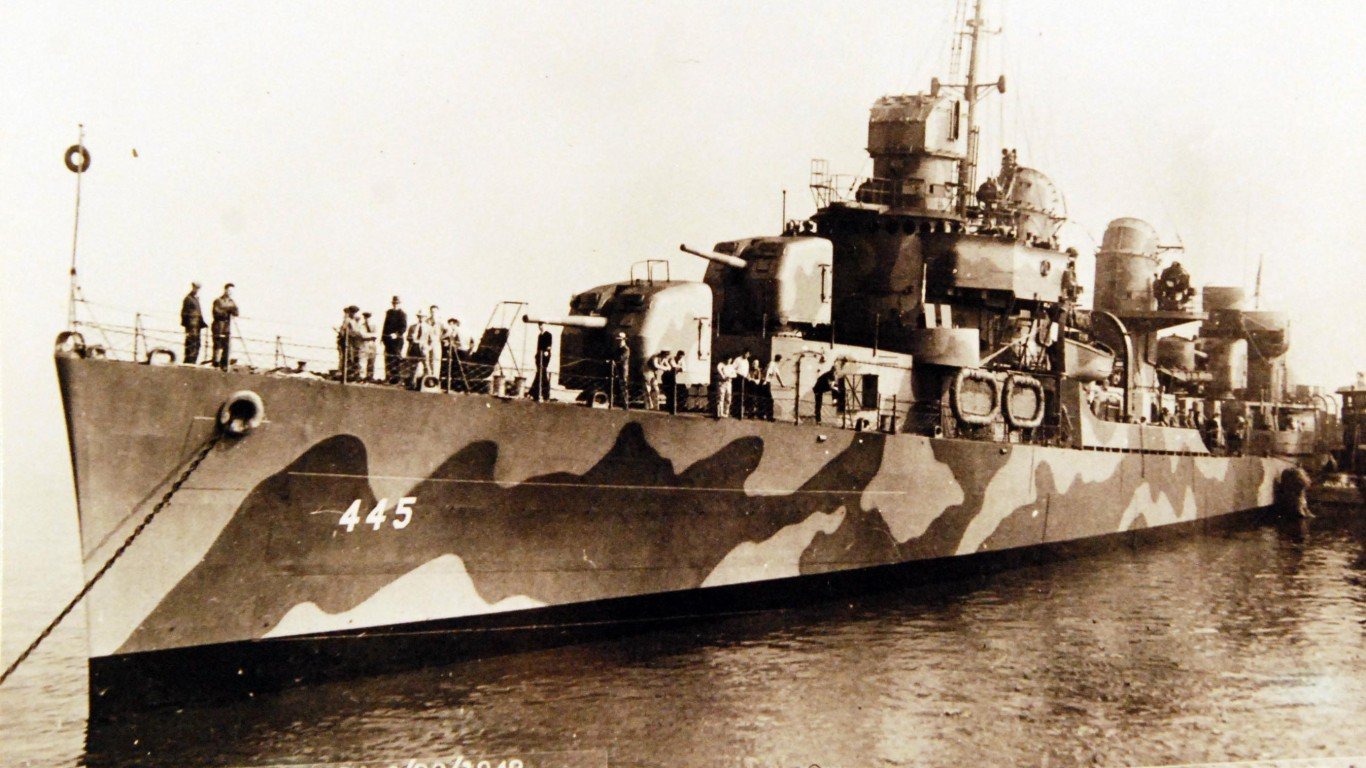
- Number produced: 175
- Type: Destroyer / anti-submarine warfare platform
- Notable ship(s): USS Fletcher (DD-445), USS Stoddard (DD-566), USS The Sullivans (DD-537)
- Year USS Fletcher (DD-445) entered service: 1942
- USS Fletcher (DD-445) personnel: 273
6. Higgins PT Boat
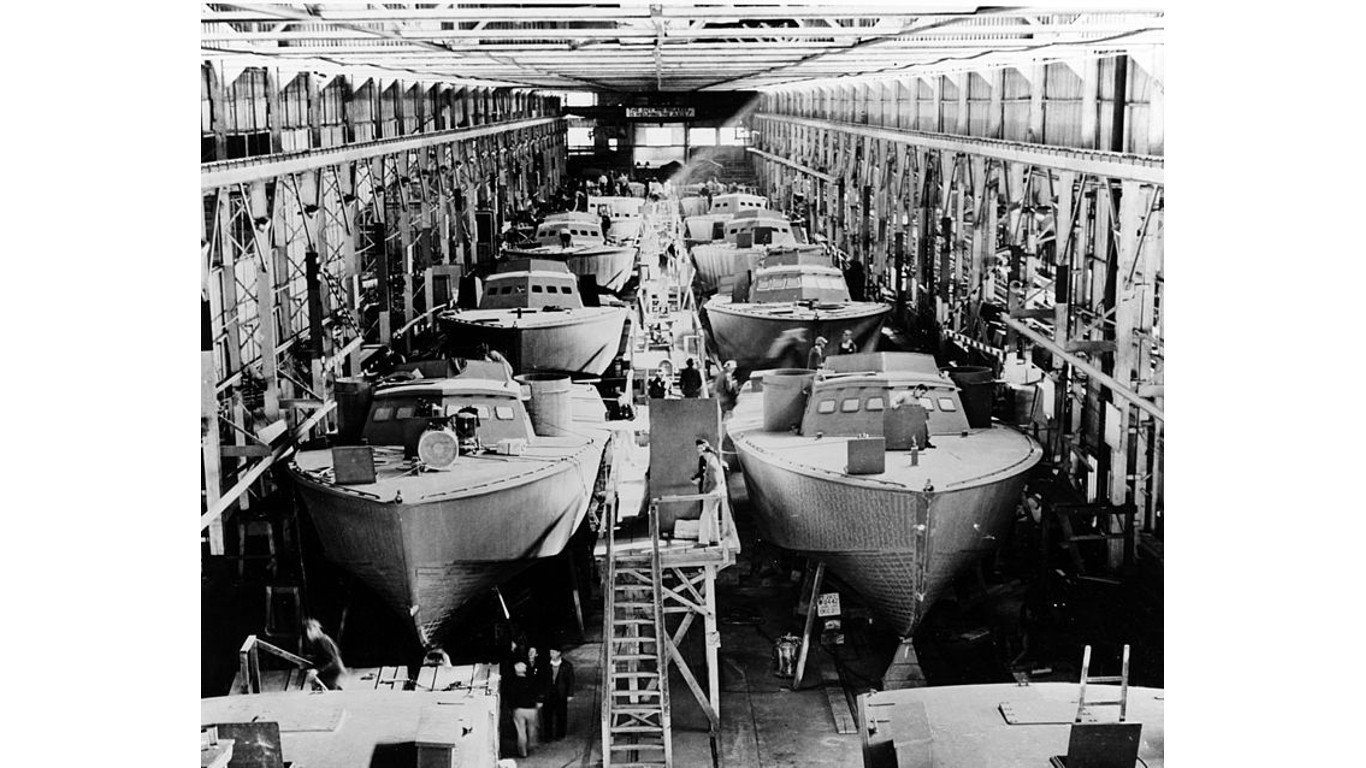
- Number produced: 199
- Type: Patrol boat/motor torpedo boat
- Notable ship(s): N/A
- Year entered service: 1942
- Personnel: 11
5. PT 103-class
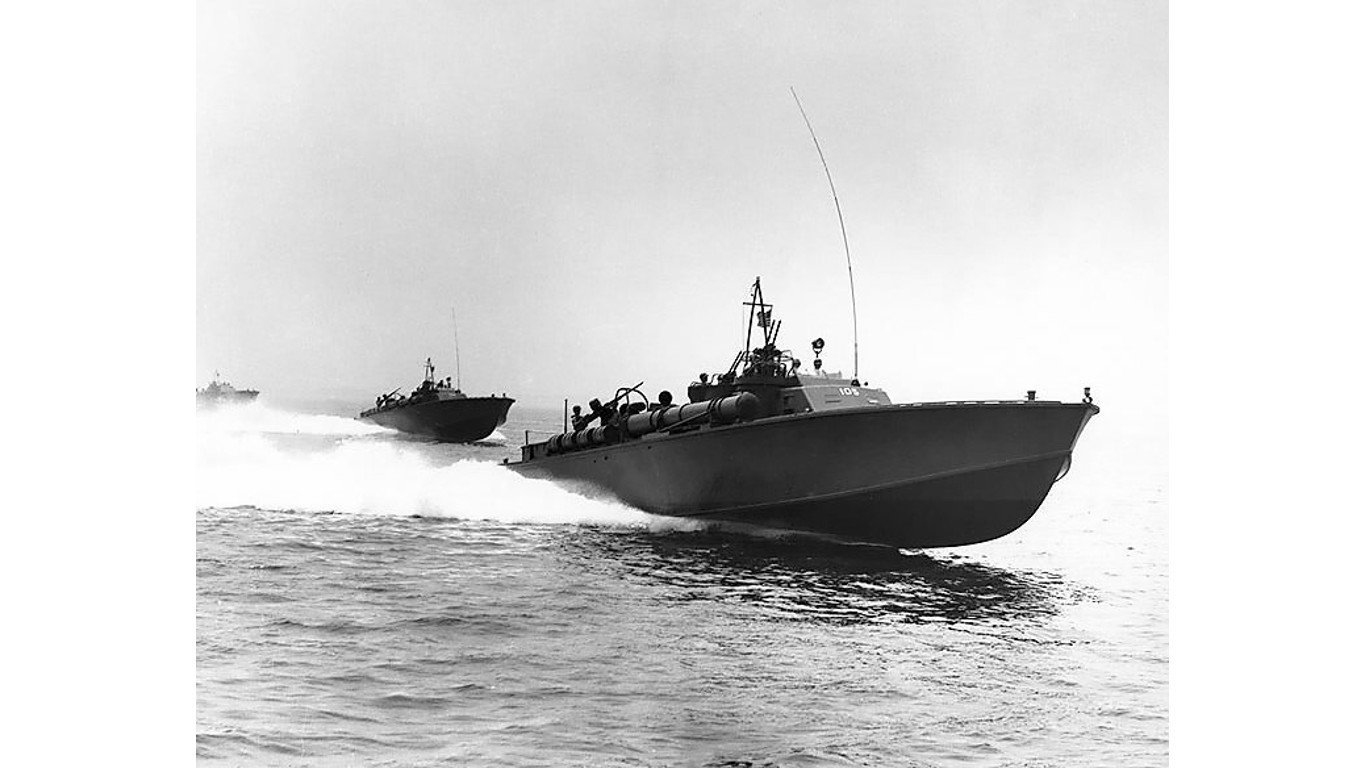
- Number produced: 326
- Type: Patrol boat/motor torpedo boat
- Notable ship(s): N/A
- Year entered service: 1941
- Personnel: 14
4. Landing Craft Infantry (Large)
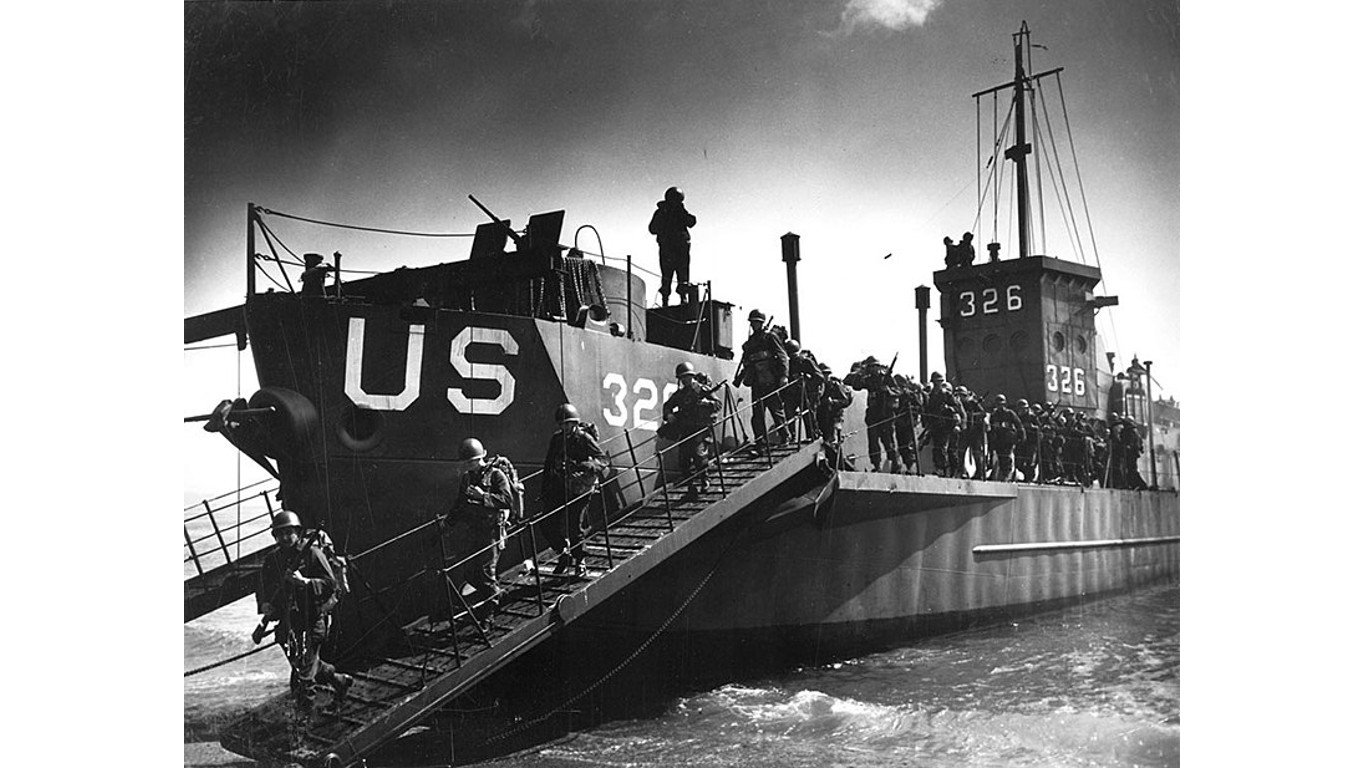
- Number produced: 923
- Type: Amphibious assault ship
- Notable ship(s): N/A
- Year entered service: 1943
- Personnel: 24
3. Landing Ship, Tank MkII (LST2)
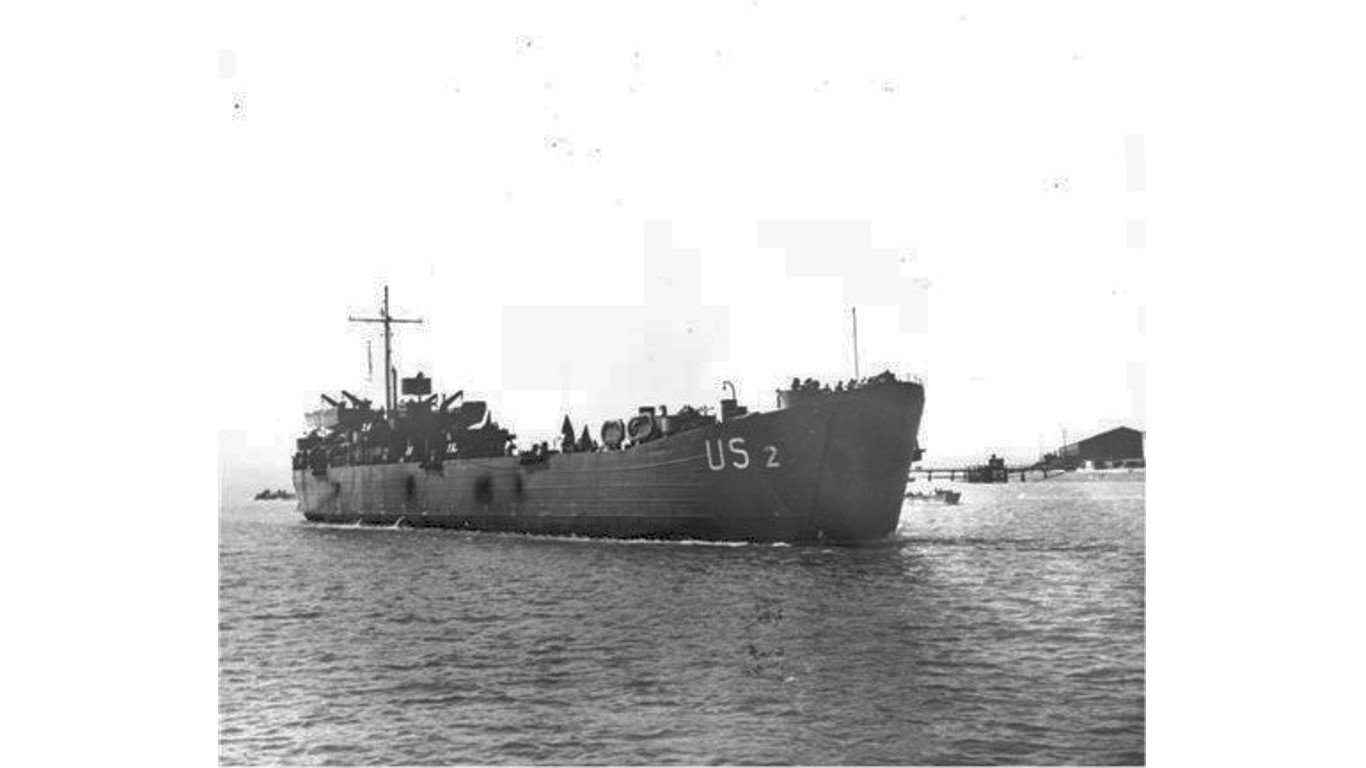
- Number produced: 1,051
- Type: Amphibious assault transport vessel
- Notable ship(s): N/A
- Year entered service: 1942
- Personnel: 265
2. EC2-S-C1-class (Liberty Ship)

- Number produced: 2,751
- Type: Cargo ship vessel
- Notable ship(s): SS John Brown B4611
- Year SS John Brown B4611 entered service: 1942
- SS John Brown B4611 personnel: 87
1. Higgins Boat LCVP (Landing Craft, Vehicle, Personnel)
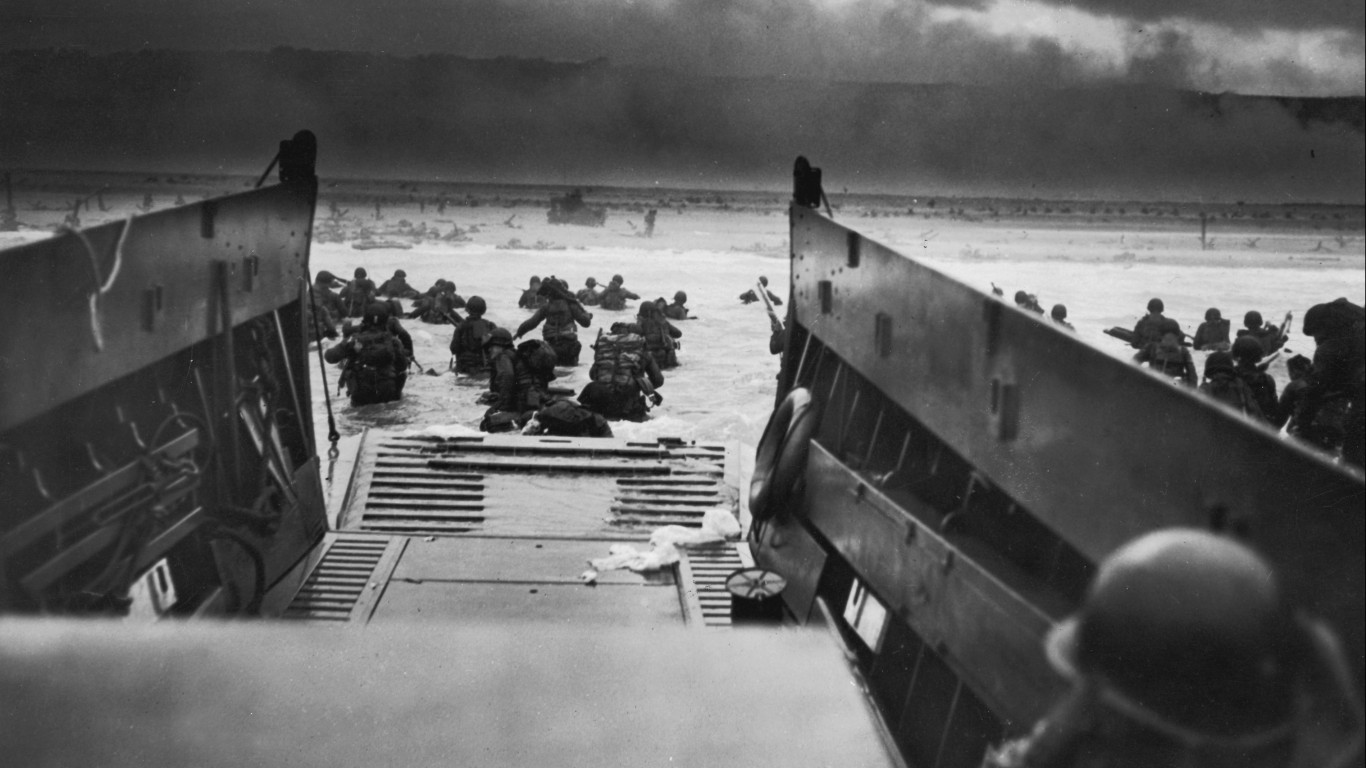
- Number produced: 20,000
- Type: Amphibious assault landing craft
- Notable ship(s): N/A
- Year entered service: 1941
- Personnel: 39
The post The Navy Produced Nearly 10x More of This Ship Than the Next Most Common Ship appeared first on 24/7 Wall St..








































